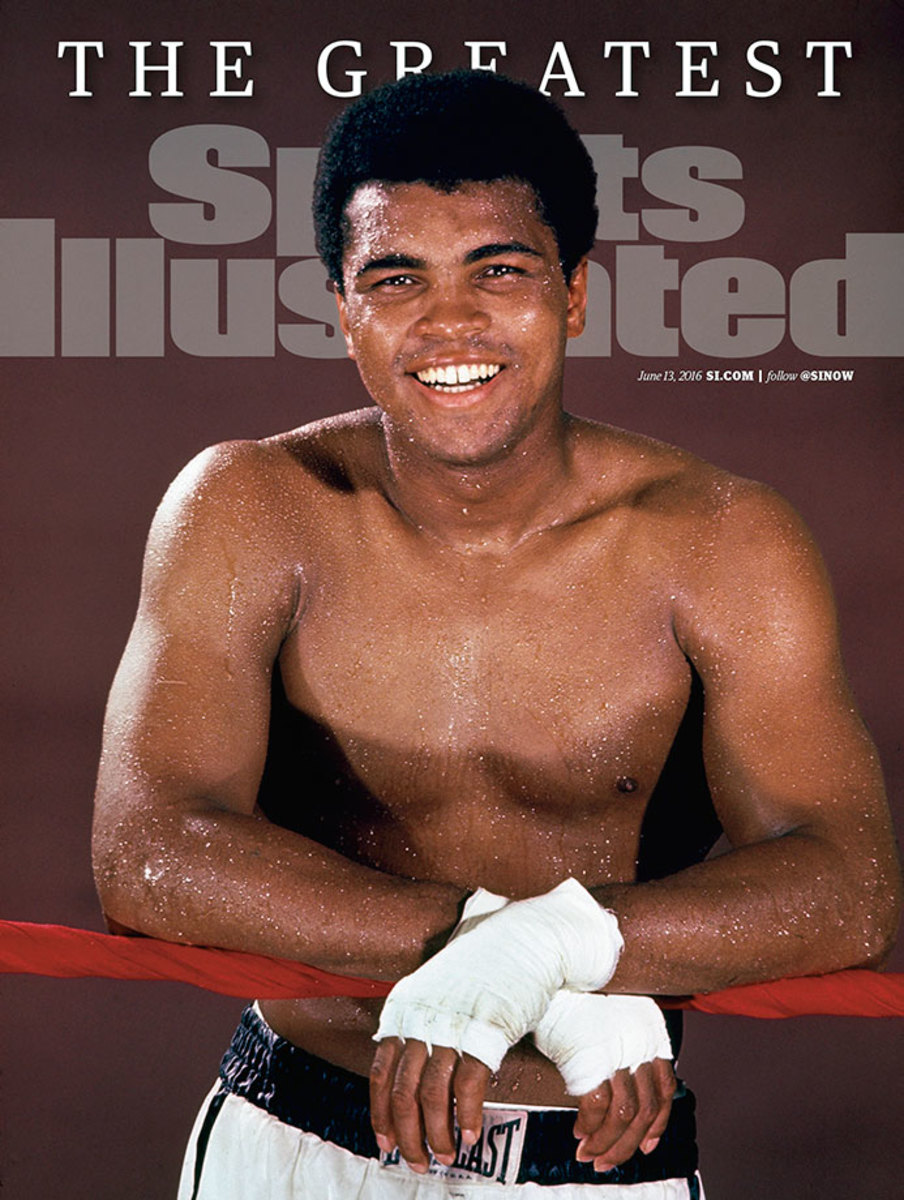Young Cassius Clay

This story originally appeared in the Jan. 13, 1992 issue of Sports Illustrated. Subscribe to the magazine here.
As a kid in Louisville, the city seemed so big to me. New York seemed so big. Chicago seemed big. And London, England, seemed far away. Africa was far away; I was Cassius Clay then. I was a Negro. I ate pork. I had no confidence. I thought white people were superior. I was a Christian Baptist named Cassius Clay.
-- MUHAMMAD ALI, NOV. 22, 1991
Cassius Clay was cruising west on Walnut Street, through the black part of Louisville known as the West End, consorting with the world from behind the wheel of a Cadillac convertible. It was the autumn of 1960. Clay was only 18, a few days away from his first professional fight and just beginning to yank the clapper in the national bell tower, the one he would use forever after to announce his arrival. Almost standing in the car, the youngster yelled over and over, to everyone he passed, “I‘m Cassius Clay! I am the greatest!’ ”
The girl sitting next to him, the one sinking shyly in her seat, trying to look as inconspicuous as possible in a pink Cadillac in the middle of black Louisville, was Wilma Rudolph, a 20-year-old college student who was visiting Clay from Tennessee State. They were a matched pair, two links on the fresh cuffs of history, as they drove that October afternoon. Clay was, by consensus, the finest amateur boxer in the world. Only two months before, at the Olympic Games in Rome, the 178-pound youth had won the gold medal in the light heavyweight division by whipping Zbigniew Pietrzykowski, a portly coffeehouse keeper from Poland. The white trunks Clay showed off to West End neighbors on his return were stained a candy pink by the Polish fighter's blood. Rudolph was the fastest woman on earth. Her victories in three sprints—the 100 and 200 meters and the 4X100-meter relay—had made her the first American woman to win three gold medals in a single Olympics.
From The Vault: Every Ali Cover Story
- Cassius invades Britain
- My $1,000,000 Getaway
- Cassius—His Fight And His Future
- The Big Fight: Can Clay Do It Again?
- Cassius Clay vs. Sonny Liston
- The Fight You Didn't See
- The Big Fight: Clay vs. Patterson
- Cassius Clay: The Man, the Muslim, the Mystery
- The Big Fight: Clay vs. Terrell
- Scramble for Ali's title
- Ali-Clay; the once and future king?
- The Slugger And The Boxer
- End of the Ali legend
- The future is a mist
- The Jaw is broken
- Ali Again
- Muhammad Ali: Sportsman of the Year
- Boxing's New Barnum
- The Epic Battle
- Ali's Road Show Rolls On
- Ali's Desperate Hour
- The Champ Again
- Look Who's Back!
- He's no Liston. He's no Frazier.
- The Last Hurrah
- The man and his entourage today
- 35th anniversary
- Once and Forever
- Battle of Champions: Ali vs. Frazier
- Who's that guy with Howard Bingham?
The two athletes had become friends in the days they spent together in Rome. Clay was sweet on Rudolph, but he was too shy to tell her how he felt. His diffidence with girls was painful. He had fainted dead away the first time he kissed one, two years earlier, and it took a cold washcloth to bring him to. So he concealed his shyness in bravura.
“I can still see him strutting around the village with his gold medal on,” recalls Rudolph. “He slept with it. He went to the cafeteria with it. He never took it off. No one else cherished it the way he did. His peers loved him. Everybody wanted to see him. Everybody wanted to be near him. Everybody wanted to talk to him. And he talked all the time. I always hung in the background, not knowing what he was going to say.”
His six-year amateur career had taken him to many American cities, from San Francisco to New York, but the journey to Italy had been his first outside his native land, and gold medal and all, it had been a turning experience in his life. Clay’s triumphant return to River City, with police sirens leading the 25-car motorcade through the streets, raised a clamor usually reserved in those latitudes for the Kentucky Derby winner. Not since 1905, when cumbersome Marvin Hart whipped Jack Root to win the heavyweight championship of the world, had Louisville produced a fighter of such celebrity.
Now there he was, driving up Walnut Street, waving at the crowds and stopping at an intersection and rising to announce himself. “And this,” he yelled, “this is Wilma Rudolph. She is the greatest!”
“Sit down,” she said.
“Come on, Wilma. Stand up!”
Crowds were stopping on the street and craning to look inside the car. “No, I can't do that,” she said.
“Yes, you can,” said Clay. “Stand up, Wilma! Come on.”
Wary of crowds, she began sinking lower, covering her face with her hands, trying to crawl inside the glove compartment, slowly disappearing in the cracks of the seat. It was no use. “Look!” Clay said, pointing down to her. “Here she is, down here! It’s Wilma Rudolph. She is the greatest! And I’m Cassius Clay. I am the greatest! Come on, Wilma, stand up!”
There was no place to hide with Cassius Clay on Walnut Street. So she rose, reluctantly, for the gaping crowds. What would be the longest running circus in American sport was pushing off. “I saw him at the very beginning,” says Rudolph. “It was bedlam. I always told him, ‘You should be on stage.’ ”
On Walnut Street, of course, he already was. This was more than 31 years ago—in a different incarnation, as Muhammad Ali, he turns 50 on Jan. 17—and that rarest of all careers, spanning two decades and part of a third, was only beginning. On Oct. 29, 1960, in his first pro fight, he won a six-round decision from heavyweight Tunney Hunsaker, the police chief of Fayetteville, W.Va. Clay emerged unscathed and promptly crowned himself king. One of his cornermen for that fight was George King, a former amateur bantamweight from Louisville who first met the 12-year-old Clay when the youngster began hanging around trainer Fred Stoner's all-black boxing team at the Grace Community Center. With Rome and Hunsaker behind him, Clay was not a boy anymore.
“Where’d you get that name?” he asked King one day. “You ain't big enough to be a king. They ought to call you Johnson or
somethin’. There’s only one king.”
“Who's that?” asked George.
“You're lookin’ at him,” Clay said.
***
Clay’s days in Louisville were numbered. By the end of the year he had moved to Florida and was fighting out of Angelo Dundee’s Fifth Street Gym in Miami Beach. Increasingly the town of his birth and boyhood became a place more of memory than of moment. Gone were the days when he skipped down the halls of Central High between classes, shadowboxing as he danced past knots of tittering students, stopping to throw a flurry that would fall just short of an incoming freshman’s outgoing nose, then ducking into a washroom to box himself silly in front of a mirror. Gone was the laughter in the classrooms when Central’s tall, scholarly principal, Atwood Wilson, would flip on the school intercom and, tugging on his suspenders, gravely intone his warning: “You act up, and I’m going to turn Cassius Clay on you.” Gone were all those early mornings when young Clay raced the school bus for 20 blocks east down Chestnut Street, waving and grinning at the faces in the windows as he bounded past pedestrians scurrying to work.
“Why doesn't he ride to school like everybody else?” a sleepy-eyed young Socrates asked on the bus one day.
“He's crazy,” replied one of Clay’s classmates, Shirlee Lewis Smith. “He's as nutty as he can be.”
Young Clay was an original, sui generis, a salad of improvisations—unpredictable, witty, mischievous, comical. An indifferent student, he lived within his own world during class, daydreaming by the hour. “Most of the time, when he wasn’t paying attention, which was often, he’d be drawing,” recalls his senior English teacher, Thelma Lauderdale. “But he never gave me any trouble. Shy and quiet in my class. Meditative.”
She never met the other Clay. Beyond her doors, flitting here and over there, he was forever a cutup. “He was a jolly-go-happy guy,” says Jimmy Ellis, a boyhood friend who also went on to become heavyweight champion of the world.
“He was just a playful person,” says Indra Leavell Brown, a friend of Clay’s since childhood. “He had a lot of friends. We’d eat in the cafeteria, and he’d come in and crack his jokes and say little silly things and have all the table laughing.”
“He always used to tell me he was in love with me,” says Dorothy McIntyre Kennedy, who knew Clay from the time he was 12. “But he always made a joke out of everything. I never took him seriously. It was like he never wanted to grow up. He always wanted to be this person—the class clown.”
Clay was different, all right, as elusive as the butterfly he would soon proclaim himself to be, inventing and reinventing himself as he went along. He dated Mildred Davis for a spell his senior year, and she remembers the Monday after he won the Golden Gloves championship in Chicago, when he showed up at school bearing in his hands, like an offering, a golden pendant. “A little gold glove, with a diamond embedded in it, on a gold chain,” says Davis. “And he put it around my neck and said, ‘I don't ever want you to take this off. I want you to wear this all the time.’ And I said, ‘Fine.’ That was about 8:30 in the morning. At about 11, he came back and said, ‘Someone else wants to wear it.’ So he took it off and let someone else have it the rest of the day. And the next day, some other girl wore it. I never questioned him about it because he was always so silly. So silly. He wanted me to wear it forever, and I had it for about two-and-a-half hours.”
Every day with Clay was an adventure, and Davis never quite knew what to expect from him. She hardly knew what to make of the bottle he was sipping from all the time. “He carried a bottle of water with fresh garlic in it,” says Davis. “He would drink it, and he reeked of garlic. I remember asking him why he put the garlic in the water, and he said, ‘I do that to keep my blood pressure down.’ And he would do some of the craziest things with his eyes. He would come up to guys, make his eyes big, press his lips together and say, ‘I’m gonna knock you out!’ He always carried his money all folded up in a small change purse, like a little old lady. If you met him, there were things about him that you could never forget. Even in high school, he would always say, ‘I'm not gonna let anyone hit me, as pretty as my face is. I’m almost as pretty as you.’ He did have beautiful skin. And I’ll never forget the night he said to me, ‘Come on, I’ll run you home.’ ”
That was the night of the variety show at Central High, a takeoff on The Jackie Gleason Show on television. “The girls would come out to announce the acts, and I was the last one, and I’d say, ‘And away we go!’” says Davis. “Cassius was on the show that night. He was shadowboxing, as usual. That was his act. After the show he said, ‘Come on, I’ll run you home.’ And I was thinking, He doesn’t drive. How is he going to run me home?”
They left the school and started walking west on Chestnut. Pretty soon Clay began to jog in place next to her as she felt her way along the sidewalk in her high heels. “It was dark,” says Davis. “He would run up ahead a block or two and jog back. He trotted beside me most of the way. That’s what he meant by running me home. So I walked 13 blocks in my high heels. How crazy he was.”
Davis and Clay took long walks together around Chickasaw Park that spring, watched television at the Clay house on Grand Avenue, sat together at her mother’s dinner table over meat loaf and corn bread and cabbage. He was, at all times, unfailingly polite. “Would you like something to eat?” Mildred’s mother, Mary, would ask. “Yes, ma’am,” Cassius would say. Indeed, there was something old-fashioned about the way he viewed things.
“You know,” he once told Mildred, “when we get married, you’ll have to wear longer skirts.”
“Why would I have to do that?” she asked.
“To look like a lady,” he said.
That was not the only time he spoke of marriage to Davis. Clay always built models in his mind, including a make-believe world with a large, happy family of which he was the benevolent father. “We watched a lot of TV at his mother’s house,” recalls Davis, “and little kids would come over. He loved kids—he always liked to have five or six around him—and I remember one time, it was around Easter, and my mother wouldn’t let me go to one of his fights. He came by after the fight, and we sat together on the front porch. At one point he said, ‘Pretty soon we’re gonna get married, and we’re gonna get a real big house with a swimming pool. All the kids in the neighborhood are gonna come over—we're gonna have a lot of kids—and they’ll all swim in the pool.’ ”
Clay was his mother’s son. Odessa Grady Clay was a sweet, pillowy, light-skinned black woman with a freckled face, a gentle demeanor and an easy laugh. Everyone who knew the family in those days saw the kindness of the mother in the boy. In his sophomore year, when he was still 15, Cassius began working after school in the Nazareth College library, across town, for 60 cents an hour. He carried books from floor to floor, dusted the volumes and the shelves, waxed the tables and dry-mopped the brown linoleum floors. The first day he walked into the library, Sister James Ellen Huff, the librarian, was struck by his shy, gentle manner.
“Do they call you Cash?” Sister Huff asked.
“No, ma’am,'' he said. “I’m Cassius Marcellus Clay.”
“He had his mother’s sweetness,” says Sister Huff.
In fact, when Clay talked about his parents at all, it was of his mother. “Everything related to his mom,” says Indra Brown. He would say, ‘My mother comes first, before anybody. My mom will be treated right.’ ”
***
Of course, all the diversionary commotion he created in his life—the incessant shadowboxing and grandstanding, the flights of fantasy into becalmed worlds of aqua pools and frolicking children—mirrored and masked the chaos of his life at home, where violence and turmoil often came and went with his father, Cassius Sr., a gifted religious muralist and commercial sign painter. The old man, chesty and fast-talking, had always cut a popular figure around town. “Everybody around Louisville knew Mr. Clay,” says Yates Thomas, a boyhood pal of young Cassius’s. “Up on his ladder painting signs.”
And down along the streets, he moved from saloon to saloon, his rich singing voice belting out his favorite songs for the audiences bellying up to the bar. The elder Clay was a wild, free-roaming drunk and womanizer whose peregrinations around town made him a legend along the river’s shore. “I just loved him,” says West End liquor store owner John (Junior Pal) Powell, a longtime friend of Cassius
Jr. “A fun-loving type of guy. But he did drink a lot. One time some lady stabbed him in the chest, and he came up to my apartment. I tried to get him to let me take him to the hospital, but he said, and he always talked real fast, ’Hey, Junior Pal, best thing you can do for me is do what the cowboys do. You know, give me a little drink and pour a little bit on the chest, and I’ll be all right.’ ”
By the time he died, in 1990—of a heart attack, in his car, in a Louisville parking lot—Cassius Sr. had embroidered a long police rap sheet with his troubled history, most of it fueled by alcohol. Thomas Hauser, the author of Muhammad Ali: His Life and Times, an oral history of the fighter, says that an FBI investigation into Ali—initiated in 1966, the year before he refused induction into the armed forces—revealed that the elder Clay had been arrested nine times on charges that included reckless driving, disorderly conduct, and assault and battery. According to the file, Odessa thrice summoned the police seeking protection from her husband. The last file on him, obtained from the Louisville police department, showed he was arrested five times for drunken driving since 1975. Ali declines to talk about violence in the Clay household, but Hauser says he could imagine, in something that Ali once told him, a young Clay fleeing the early-morning chaos at home.
“I don't know what it was,” Hauser recalls Ali saying, “but I always felt I was born to do something for my people. Eight years old, 10 years old; I’d walk out of my house at two in the morning, and look at the sky for an angel or a revelation or God telling me what to do. I never got an answer. I’d look at the stars and wait for a voice, but I never heard nothing.”
The bars in Louisville closed at 2 a.m. Regardless of what things that go bump in the night drove the boy from his home at two in the morning, he would soon find his calling outside the thin walls of the bungalow on Grand Avenue. And when he did, predictably, he created another world for himself, floated through it, escaped into it until, at last, he used it to express himself like no other man of his time.
Clay was six pounds, seven ounces at birth, but by age three he had grown as big as a calf. One day, when he was still an infant, he jarred loose one of Odessa’s front teeth. “We were lying in bed,” she says, “and he stretched his arm out and hit me in the mouth. He just loosened the tooth. They couldn’t straighten it. Finally it had to come out.”
Cassius and his brother, Rudy, 18 months younger, would visit their uncle William Clay, and neighbors would bolt the doors. “One day they broke the birdbath in Mrs. Wheatley’s yard,” says William. “We called them the Wrecking Crew.”
The sea change in his life occurred when, at age 12, he was attending a fair downtown and a rascal stole his new bike. Told a cop was downstairs in the Columbia Gym, Cassius went there to complain. In tears, he told his tale to the policeman, Joe Martin, who was training an amateur boxing team. “I'm gonna whip him if I can find him,” said Cassius of the thief.
Martin remembers asking the boy if he could fight. “You better learn to fight before you start fightin’,” Martin said.
Cassius looked around the gym at all the wondrous activity—the snap of the punching bags and the skipping of rope and the sparring in the ring. Finally, he said, “I didn't know this was here. Can I come?”
He was back the next day. “He didn't know a left hook from a kick in the ass,” says Martin. “But he developed quite rapidly. I’d tell him what to do—how to stand, how to keep his arms and hands, how to punch. He’d be hitting the heavy bag, and I’d tell him, ‘Cassius, there’s a fly on that bag. I want you to hit him, but I don’t want you to kill him. You got to turn the hand over. Snap punches. Phew! Phew!’ ”
Cassius loved to fire and turn the jab. Even at 12, when he was an 89-pound novice, he had a beguiling cocksureness that played well with the older amateurs in Louisville. George King first met Cassius during an intracity tournament at the Columbia Gym. Cassius was boxing for Martin’s team, but he drifted over to Fred Stoner’s team in the locker room and stood next to King, who was 21 years old and already married with a child. “I’m taller than you,” Cassius said.
“Do you think you could beat me?”
Soft laughter lifted among the older Stoner fighters. King smiled.
“Think you could stop this jab?” Cassius asked, throwing out two quickies. King pushed a jab toward Clay.
“My jab’s quicker than yours,” the boy said.
Rudell Stitch, then age 21, turned a thumb down. Fixing Stitch with a smirk, Cassius said, “Come on, I’ll give you some of it, too.”
All these years later, King’s voice lilts at the memory. “We were down there, grown men, and he didn’t give a damn,” says King. “That's just the way he was. He’d pick at you, mess with your head, tease you to death. I kind of liked him. He was a neat lookin’ kid, and he had all that personality. Everybody just took to him.” Over the next six years Cassius grew into a surpassing amateur boxer: 100 victories in 108 bouts; two consecutive national AAU championships, in 1959 and ’60, both times as a light heavyweight; two straight national Golden Gloves titles, in ’59 as a light heavy and the next year as a heavyweight; and, of course, an Olympic gold medal. “His secret was his unusual eye speed,” says Martin. “It was blinding. The only other athlete I ever saw who had that kind of eye speed was Ted Williams. When he started fighting, Cassius was so fast with his eyes that you could give a guy a screen door and he wouldn’t hit Cassius 15 times with it in 15 rounds. He was different. Quick as lightning for a big man, the quickest I ever saw.”
He was born with phenomenal physical gifts, but unlike so many others, he nurtured them and squandered nothing. Indeed it was as if, in Martin’s gym, Cassius had found the message in the silence of the stars. In high school he lived as ascetic an existence as possible for a teenager. Yates Thomas remembers Cassius showing up at school in the morning after buying two raw eggs and a quart of milk.
“He would break the eggs into the milk, shake it up and drink it,” says Thomas. “He’d say, ‘Now I'm ready to go to school. I’m the baaaaddest man in Looville!’ All he thought of was fight-fight-fight. We used to go to a teenage place at night, and he’d stay till 10 o’ clock, even on a Saturday night, and then he’d say, ‘I'll see ya. I’m goin’ home to bed.’ He didn’t smoke. He’d say, ‘Ain't gonna put that stuff in my lungs.’ ”
At some point in his senior year Clay began to eschew pork, and for the same reason that he reeked of garlic. “Pork's not good for you,” he warned Davis. “It raises your blood pressure.” When Junior Pal offered him a grape soda early one morning as Clay was working out, Cassius waved him away. “The sugar and acid ain’t good for you,” he said.
Despite what was happening at home—or, more likely, because of it—he shunned alcohol. It was as if he were studying, high on his own Himalayan peak, the evanescent secrets of the butterfly. “He didn't chase women,” Martin says. “And I never heard him say a curse word in my life. We used to go to a lot of towns, and he used to sit down and read a few pages of the Bible before he went to bed.”
Clay’s dalliances with women had far less to do with romance than with fantasy—his flirtations had the fizz life of a soft drink—and, according to Indra Brown, he was a virgin when he graduated from high school. “I know that for a fact, because he confided in me on things like that,” she says. “He used to say to me, ‘I will always have money. I’m not going to be a Joe Louis. Women are not going to drag me down. They are not going to be my downfall!’ ”
Late in his junior year he began doing experiments in the technique of kissing, and on his first try he nearly blew up the lab. Areatha Swint had first met Clay after a high school variety show, when she needed someone to walk her home. They dated for three weeks before he got around to asking her for a kiss goodnight. “On the night he did, it was late,” Swint would recall in a newspaper memoir. “It must have been around 12:30 or one. We were being quiet because my mother had said there was no company after 12, and he didn’t have any business being up that late because he was in training.
“I was the first girl he had ever kissed, and he didn’t know how. So, I had to teach him.... When I did, he fainted. Really, he just did. He was always joking, so I thought he was playing, but he fell so hard. I ran upstairs to get a cold cloth. Well, when you live in the projects, a lot of times mother would wash and lay the towels on the radiator to dry. So I looked for one and got some cold water on it and ran back down the stairs.”
She doused him with it. When he finally came to, Swint asked,
“Are you O.K.?”
“I'm fine, but nobody will ever believe this,” he said.
His shyness was such that at times the mere presence of girls struck him dumb. In 1959, recalls Wilbert (Skeeter) McClure, who was another young boxer, he and Clay were in Chicago for the Golden Gloves when Cassius began pestering him and a few other fighters to don their Golden Gloves jackets and head over to Marshall High, a largely black school, to meet some girls. McClure was in college and had no interest in high school girls, but Clay kept bugging him to go. McClure finally agreed, and so they visited the school for lunch. Girls were all over the place, eyeing this team of young gladiators with the new jackets. After Clay got his tray of food, he sat down, said nothing and never looked up.
McClure turned the needle. “You wanted to get us here,” he said to Clay. “Come on. Do your thing.”
Cassius sat frozen. Recalls McClure: “He was silent, staring at his plate and eating his food.”
***
By this time, Clay was a minor celebrity back home. He had often been featured on Tomorrow’s Champions, a local Saturday afternoon television program featuring young boxers, and his name had begun appearing in the Louisville Courier-Journal as far back as 1957, when he was 15 and he stopped a tough named Donnie Hall. The headline read: CLAY SCORES T.K.O. OVER HALL IN 4TH.
When Jimmy Ellis, a 17-year-old untutored roughneck from Louisville, saw that bout on Tomorrow’s Champions, he went to the Columbia Gym to learn how to box. Says Ellis, “Hall was a friend of mine, and I figured, I can beat that other guy.” So Ellis started fighting. History would soon be up to its old tricks, for it was Ellis, 11 years later, who would win the vacant heavyweight championship after Ali was stripped of it for having refused to serve in the military during the Vietnam War. Ellis traveled frequently with Clay in their amateur years, and what he remembers most vividly about Clay was his almost boundless capacity for work in the gym. “I don’t know where he got the energy,” says Ellis, who now works for the Louisville parks system. “He'd box and box. He’d box three or four rounds with one guy. Then he’d sit down. Then another guy would come into the gym, and he’d go three or four rounds with him. Then he’d come out and hit the heavy bag. And then he’d go three or four rounds with another guy.”
And anytime a professional fighter came to town, says Ellis, Clay would train where the pro was. Dundee brought light heavyweight Willie Pastrano to Louisville in 1957, and they were sitting in their hotel room one day when the phone rang. Dundee took the receiver and heard this: “My name’s Cassius Marcellus Clay. I’m the Golden Gloves champion of Louisville, Kentucky. I’m gonna win the Golden Gloves, and I’m gonna win the Olympics in 1960, and I want to talk to you.”
Dundee invited him up. For the next three hours, recalls Dundee, Clay picked and probed and prodded his brain, asking him how his fighters trained, what they ate, how far they ran, how much they hit the bags. “He was a student of boxing,” Dundee says. “He was so inquisitive. A very interesting young man.”
Two years later Dundee and Pastrano were back again—Pastrano was only four years away from winning the light heavyweight crown—training for a fight in Louisville against Alonzo Johnson. There was young Clay again, this time hustling Dundee for a chance to spar with Pastrano. Dundee turned him down—he did not believe in matching amateurs against pros—but the kid persisted: “Come on, come on. Let me work with him.”
So Dundee finally yielded. Pastrano sparred one round with Clay, and the boy danced around him. “In and out, side-side, in and out,” says Dundee. “Stick-stick-stick. Move-move-move. He was so quick, so agile, Willie couldn’t do nothing with him.”
Dundee called it off, saying, “Willie, baby, you ain’t gonna spar no more. You’re too fine, baby.”
Pastrano wasn't buying. “ ---- !” he said. “The kid kicked the hell out of me.”
So much of what came to characterize Ali as a fighter—his tactics in and out of the ring—he began cultivating as an amateur. Ellis recalls Clay working on opponents’ minds as deftly as he would soon work on their chins. Says Ellis, “We’d be fighting in the wintertime, in Chicago, and there’d be his opponent sitting there sniffling or blowing his nose. Cassius would say, ‘Man, you got a cold? I’m gonna knock you out—cold! You can’t beat me if you got a cold. I’m gonna knock you out!’ ”
Martin says that long before Clay went berserk at the weigh-in before his first bout with Sonny Liston, in 1964, he had become a performer—even an artist—at the scales. He was being weighed on March 9, 1960, only hours before facing Jimmy Jones, the defending heavyweight titleholder in Chicago’s Tournament of Champions, when he turned to his trainer. “Mr. Martin,” Clay said, “are you in a hurry to get away from here tonight?”
“Not really,” said Martin. “Why?”
Clay pointed to Jones and said, “This guy over here, I can get rid of him in one round if you’re in a hurry. Or, if you’re in no hurry, if you want me to box, I can carry him for three rounds.”
“I'm in no hurry,” said Martin.
“I’ll let him go three,” Clay said.
The kid spun Jones like a top. Clay slipped the champion’s heavy artillery in the first round, and then, according to the Louisville Times, he “deftly outboxed him the final two rounds.”
Clay was on a path to glory, only six months away from the Rome Olympics, and by then he was rising at four in the morning, before first light, to climb into his sweats and strap on his work boots with the steel toes. At that hour John Powell was usually done sweeping out the liquor dispensary where he worked, and he would listen to the wind blow outside. Recalls Powell: “I'd be sitting on the counter, and I could see his shadow coming around the corner from Grand Avenue. Clay was on his way to Chickasaw Park. Cold, dark winter mornings. You could see that shadow coming. Then here he comes, running by, with those big old Army brogans. He’d be the onliest person in the early morning. And I’d walk outside, and he’d stop and shadowbox. He once said to me, ‘Someday you’ll own this liquor store, and I’ll be the heavyweight champion of the world.’ Both of those came true, too.”
Clay ran all over Louisville in those steel-toed boots—west to Chickasaw Park in the early morning, east down Chestnut racing the school bus, up and down Walnut Street, downtown and back again, the brogans clomping on the pavement, the fists flying, the litany always the same: “I'm gonna be the next world champion. You’re gonna read about me. I’m the greatest!” At 10th and Walnut crowds of men used to gather around a peanut vendor, crack nuts and talk sports. “Cassius Clay used to come up the street acting like he was hitting people,” says Lawrence McKinley. “Shadowboxing and throwing punches in his heavy shoes. Nobody ever dreamed he’d be world champ.”
One day one of the street-corner habitues, Gene Pearson, got tired of hearing the litany and vowed to put Clay in his place. “He ain't gonna be no champion,” Pearson said. The next time Clay passed the corner, Pearson stepped out from behind a post and hit him with a straight right.
“Pow!” says McKinley. “As hard as he could. Clay liked to go all the way down. He went to his knees, just like he was gonna fall, and he stopped himself and looked up at Gene, and he stretched his eyes real wide and he came up and—whew!—he must have hit Gene 15 or 20 times, so fast you could hardly see the punches, and Gene started saying, ‘Get him off me! Get him off me! Yeah, you’re gonna be the champ.’ And Cassius went right on running up the street. Never said nothin’. The next time Cassius came by, one of the guys said, ‘Are you gonna hit him again?’ And Gene said, ‘Hey, champ!’ ” Clay was never a street fighter, and classmates can recall only one occasion when he was goaded into fighting. According to Indra Brown, the episode nearly brought Clay to tears. They were at a delicatessen across from the school when two kids began baiting Cassius, pushing him around and saying, “Come on, let’s fight. You can fight.” Clay kept backing off. “Leave me alone,” he kept saying. “I don’t want to do this. Leave me alone.”
The boys pushed too far. “Cassius finally went after one of them,” Brown says. “He floored him. A right hand. To the jaw. Cassius almost cried. I could tell by his voice. But that was the end of that. They never bothered him again.”
He avoided all confrontations, including the civil rights demonstrations downtown in which blacks were involved during the late 1950s. Clay was born in a town where most of the public facilities were segregated. Until the barriers started coming down in the ’50s, Chickasaw was the only park that blacks could use, and most of the libraries, restaurants and movie theaters were for whites only. Central was the all-black high school. When Clay was at Central, one of the teachers, Lyman Johnson, regularly led students on picket lines and lunch-counter sit-ins. Clay never participated, says Yates Thomas, except the one time that Thomas talked him into joining him on a picket line at a downtown restaurant.
Clay was standing on the sidewalk, says Thomas, when an eighth-floor window opened and a white woman emptied a bucket of water on the marchers below. “She emptied it right on his head,” says Thomas. “She got him exactly. Water spilled all over him. He was just standing there.”
That ended his career as an activist in Louisville. “He said he would never demonstrate again,” says Thomas. “He never did.” For years it was believed that Clay’s activism began for real upon his return from the Olympics, when a Louisville restaurant refused to serve him and a white motorcycle gang threatened him. According to long-accepted Ali lore, Clay threw his gold medal into the Ohio River. In fact, says Hauser, “he lost it.” And while Clay was turned away from restaurants on many occasions, the biker incident never happened.
***
His life had become so consumed by the rigors of boxing—aside from all the roadwork, he trained in two gyms, with both Martin and Stoner—it was something of a wonder that he made it through Central at all. But in his junior and senior years, Clay had as his ally the most powerful man at Central, the principal. Atwood Wilson adored the young man. At assemblies Wilson would embrace him onstage and announce, “Here he is, ladies and gentlemen: Cassius Clay! The next heavyweight champion of the world. This guy is going to make a million dollars!”
Academically Clay paddled in the doldrums—he ended up ranked 376th in a class of 391 students—but his failure at scholarship did not trouble the principal with the master’s degree in education from the University of Chicago. What Wilson admired most of all was excellence, says Bettie Johnson, a counselor at Central, and no one at the school excelled at his job in life more than young Clay did. So the grades be damned. Clint Lovely, a Central student at the time, recalls Wilson saying, “Cassius doesn’t need to know anything but how to fill out his income tax. And I’m gonna teach him that.” With graduation drawing near, there was a powerful sentiment among some teachers not to permit Clay to graduate because, says Johnson, he wasn’t going to pass English. Thelma Lauderdale required a term paper from her English students, and Clay had not done his. “He wanted to do it on the Black Muslims,” recalls Johnson, “and the teacher did not feel that was acceptable. The subject was controversial at the time. You have to understand what was going on in black thinking prior to the militancy of the sixties. Black Muslims were considered by blacks as very, very questionable people. Cassius was not a militant, outspoken guy. He always had this mischievous twinkle in his eye, like he had a private joke he was telling himself. He just had this interest in the Muslims.”
Before a faculty meeting in the music room, Wilson rose and delivered his Claim to Fame speech: “One day our greatest claim to fame is going to be that we knew Cassius Clay, or taught him.” At this point, says the former school librarian, Minnie Alta Broaddus, “I thought, Maybe he knows something I don’t know.”
Wilson argued that Clay had a unique set of gifts, that he was going to be the heavyweight champion of the world and that he should not be held to the rules governing the average student. No one in the room was more of a scholar than the eloquent Wilson—he was ruthless with any teacher he perceived as mediocre—but here he argued that Clay was so exceptional that he should not be denied a diploma simply because he could not parse a sentence or quote from Macbeth. “The coaches all thought it was great because they were always trying to play guys who were ineligible scholastically,” says Johnson. “The academic people were outraged because they thought we were letting our standards down.”
Wilson was unmoved. “Do you think I’m going to be the principal of a school that Cassius Clay didn’t finish?” he said. “Why, in one night, he’ll make more money than the principal and all you teachers make in one year. If every teacher here fails him, he’s still not going to fail. He’s not going to fail in my school. I’m going to say, I taught him!'”
The Claim to Fame speech carried the day. Clay fulfilled his term paper requirement when Lauderdale permitted him to give an oral presentation to her class, a travelogue on his adventures touring various American cities as an amateur boxer. He passed. At the graduation ceremonies on June 11, 1960, Clay received a standing ovation as he strode to get his diploma. It was, in a sense, a classic final performance for the clown who would be king.
“I remember when he graduated,” says Davis. “All the guys had white shirts and ties under their caps and gowns. And dress shoes. He had on a T-shirt, and he walked down the aisle in his brogan work boots. With the steel toes.”
***
It is more than three decades later, the autumn of 1991, and Muhammad Ali is sitting with his head back and his eyes closed in the high-backed leather chair in the office behind his house on a farm in Berrien Springs, Mich. His 50th birthday is two months away. Out back, a horse in a pasture is galloping along a fence. Dusk, in orange silks, approaches from the west. Ali rises slowly from his chair and begins moving sideways across the room, dancing, sliding in and out, shooting out the jab, shadowboxing, daydreaming. “I’ll win the heavyweight championship back when I’m 50 years old!” he says.“Isn't that somethin’? Is that powerful? They can pay $20 million or $50 million to whoever I fight. Holyfield or Tyson. This is gonna shake ’em up. It’s like a miracle, a dream. Muhammad Ali is back! Can you picture this?”
Ali sweeps left and right across the rug, stops in front of the hall door and sets his feet. He throws a flurry, snaps a jab, crosses with an overhand right—Phew! Phew! Phew!—comes back to his toes, slips back into the chair. He is breathing heavily as he leans back and closes his eyes again. His left hand, resting on his chest, is trembling. The grin is childlike, mischievous.
“Can you believe it?” he says. “Dancin’ at 50!... Ooooohhh.... Dancin’ at 50. Maaannnn. It’ll be bigger than the moon shot! I’m dedicatin’ the fight to the baby boomers, the people who were six years old when I beat Sonny Liston. Now they’re thirty-four. I’ll do the Ali shuffle!”
Back on his feet, he rolls to the left, stops, stutter-steps a shuffle, dances left and pulls back his head, dodging punches here and sliding there. Ali is inventing himself again, dreaming again, picking and messing with all of the old ghosts in new fantasies.
“I get a hundred million,” he says. “Did you hear me say that? A hundred million dollars! In the first 25 seats there’ll be 25 presidents. President of Egypt. President of Syria. Gaddafi. Mobutu. Kings. Can you imagine the security? Maaaannnn. A hundred million dollars for architects and builders to build a big school. If you had a chance to build a school, wouldn’t you? Imagine: the Muhammad Ali School of Technology or whatever. Seventy-five classrooms. Big kitchen. Auditorium. My dream is to make lectures in the school, to 300 kids! Take them off dope. In the school that I built. Can you imagine that?”
Yes, of course. Three hundred kids, a big, happy family at last. And they can all go swimming in the pool.
Muhammad Ali's SI Covers
June 10, 1963
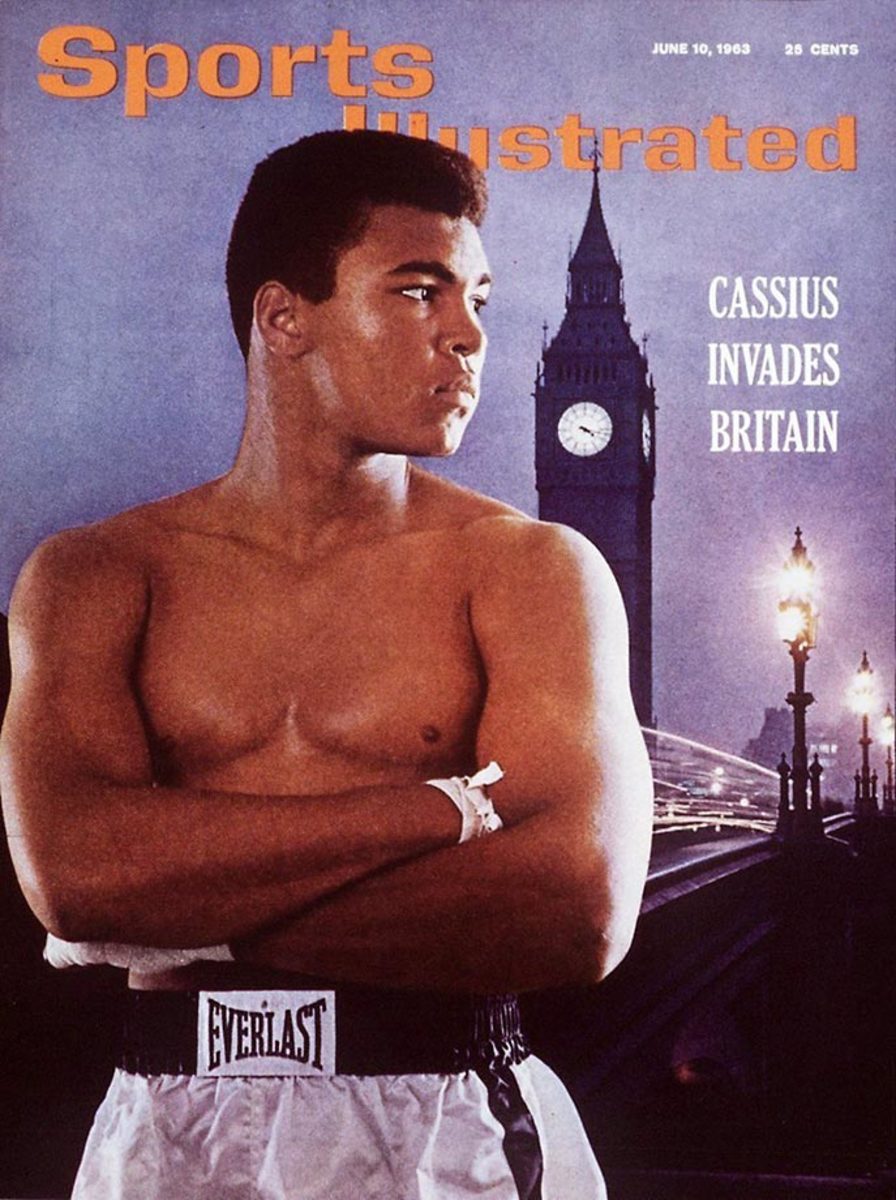
February 24, 1964
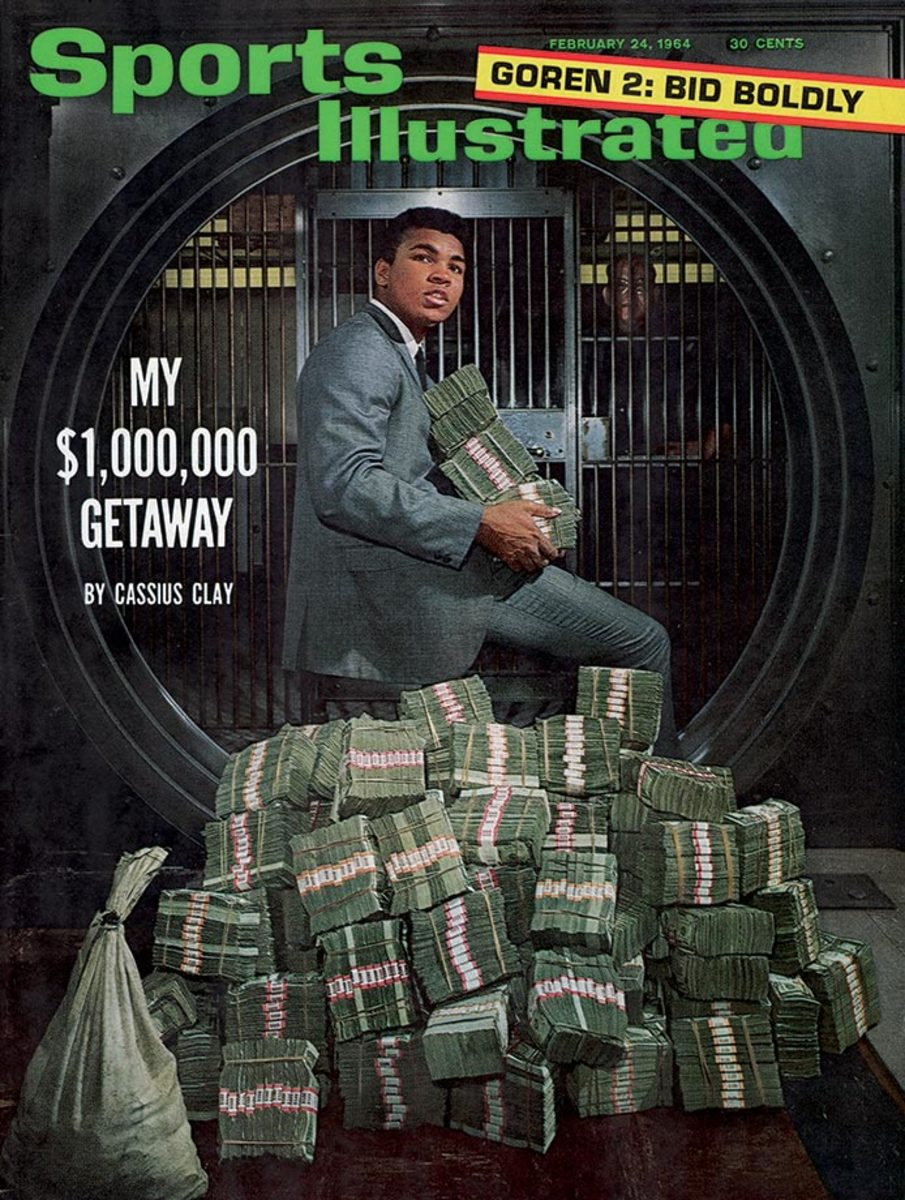
March 9, 1964
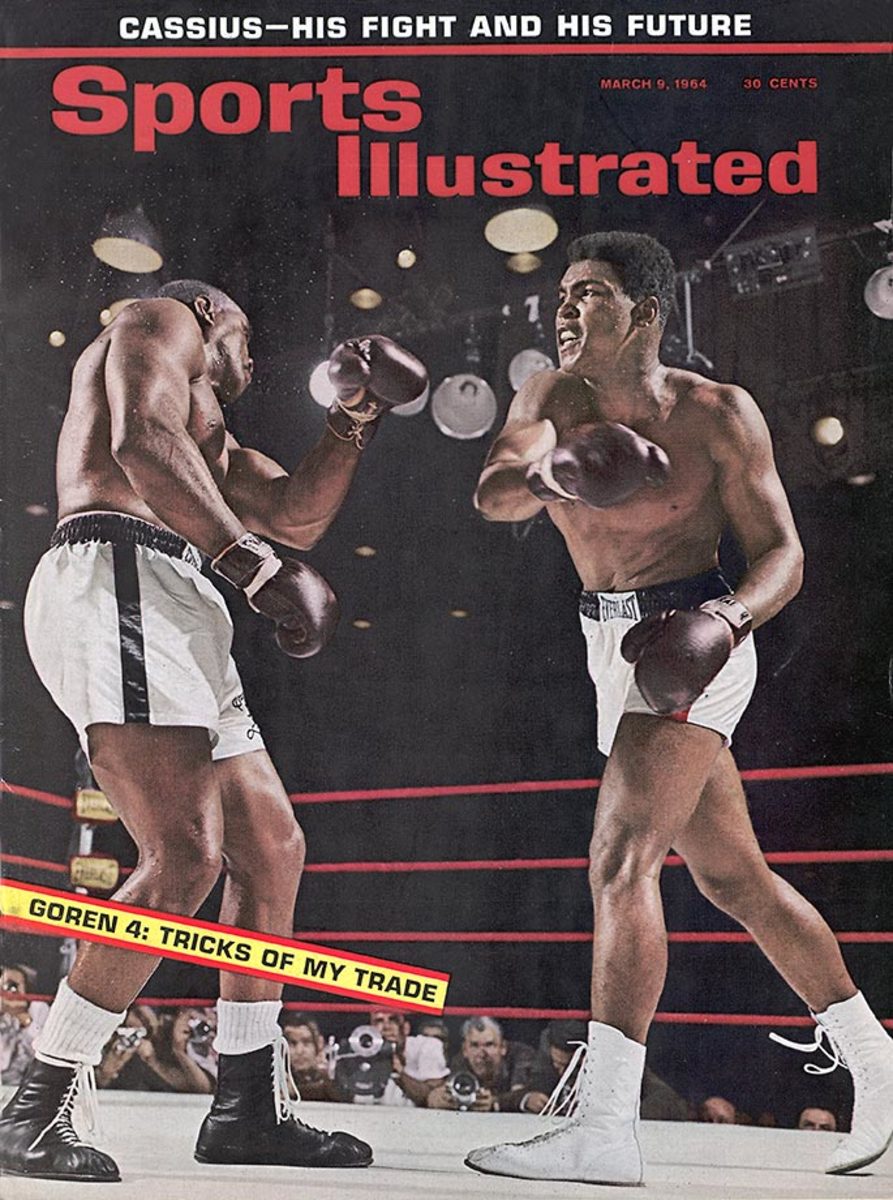
November 16, 1964
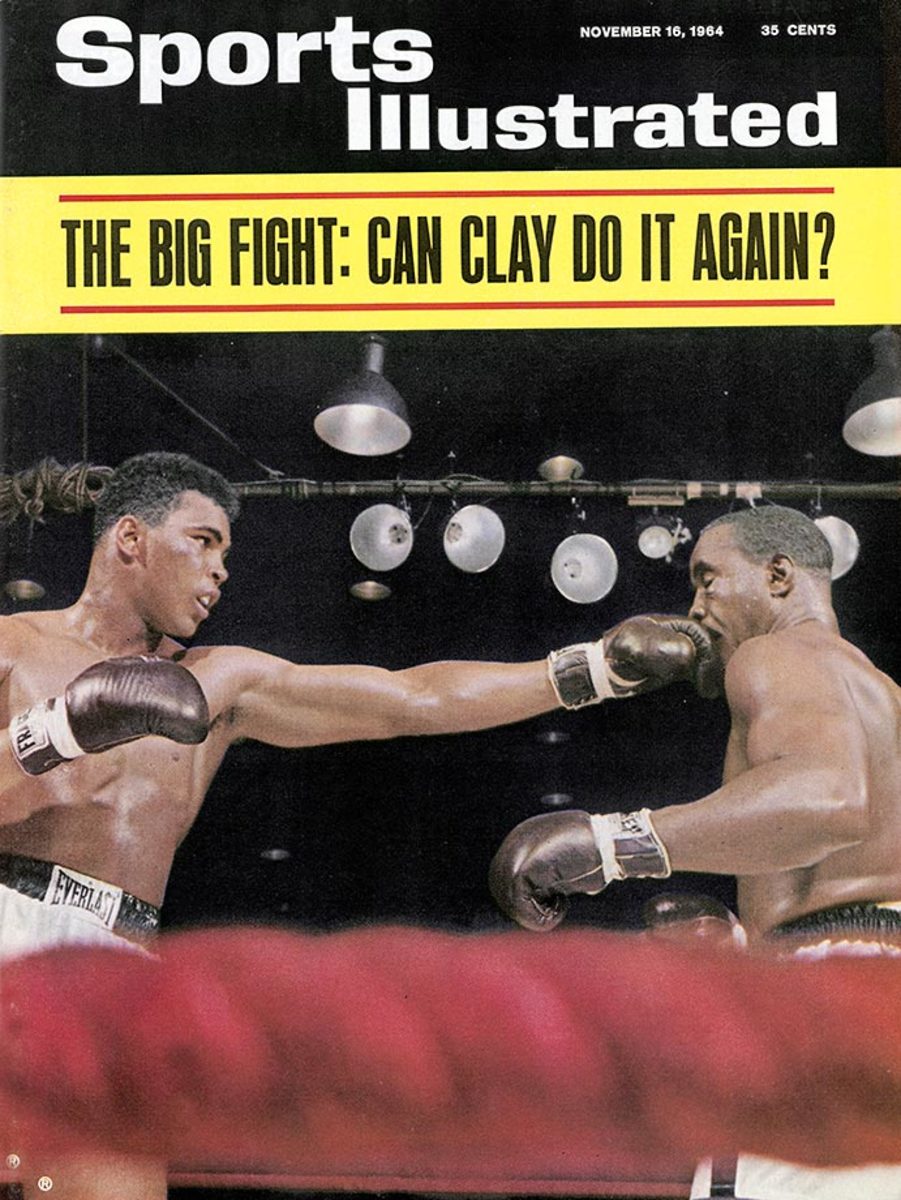
May 24, 1965
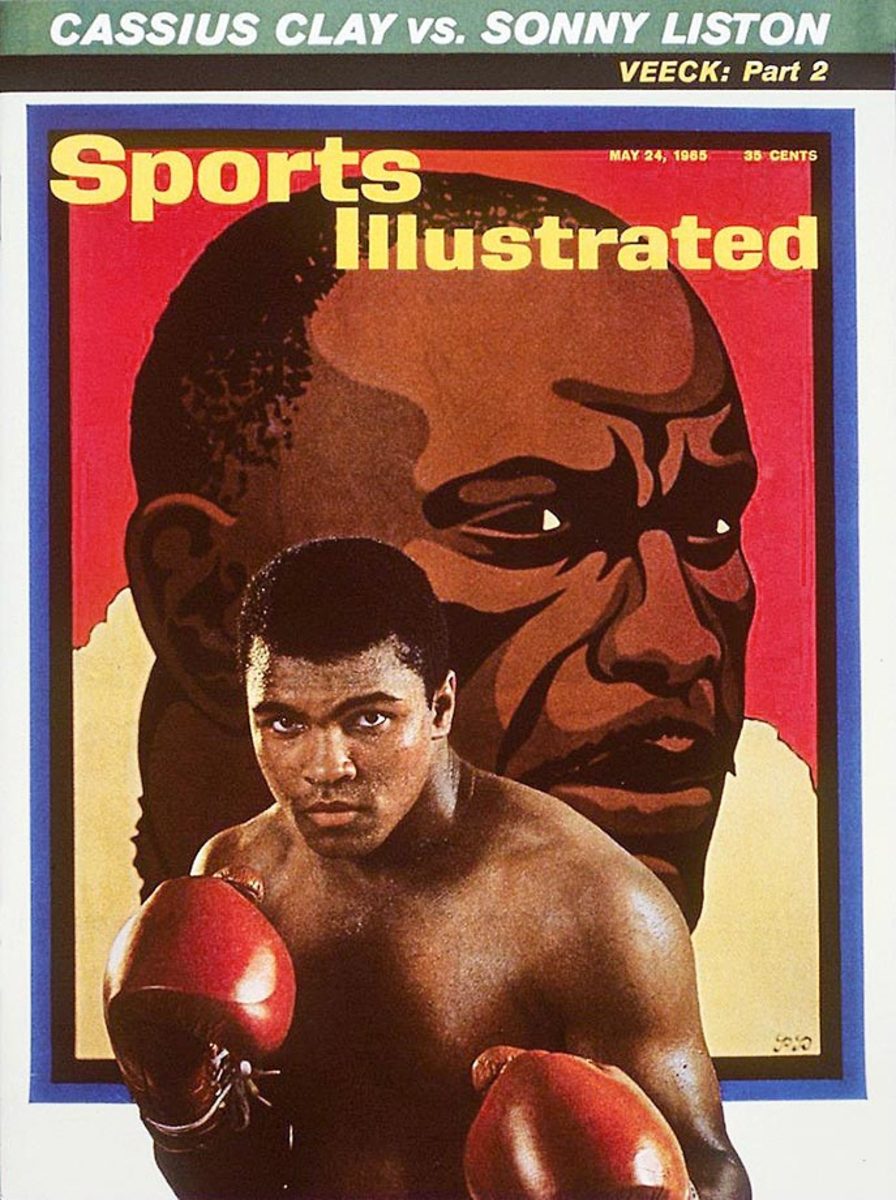
June 7, 1965
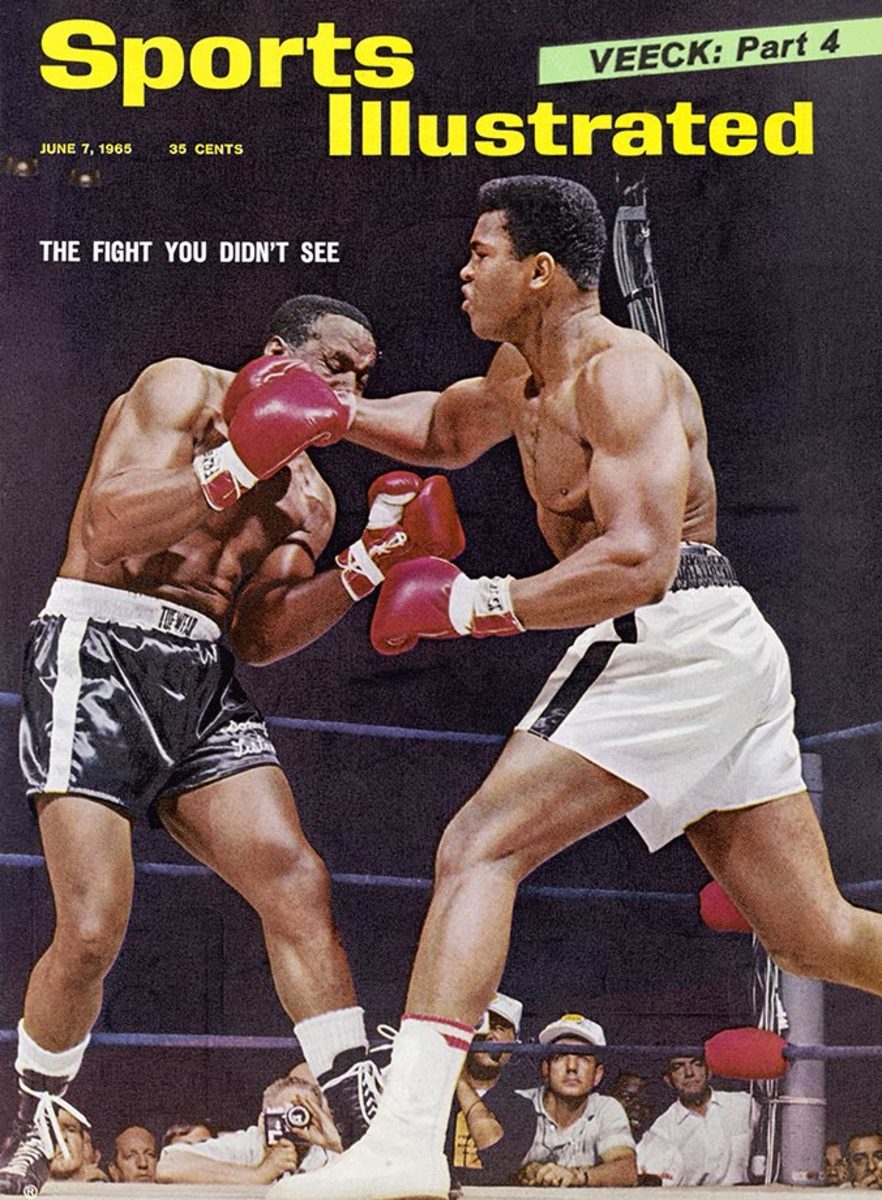
November 22, 1965
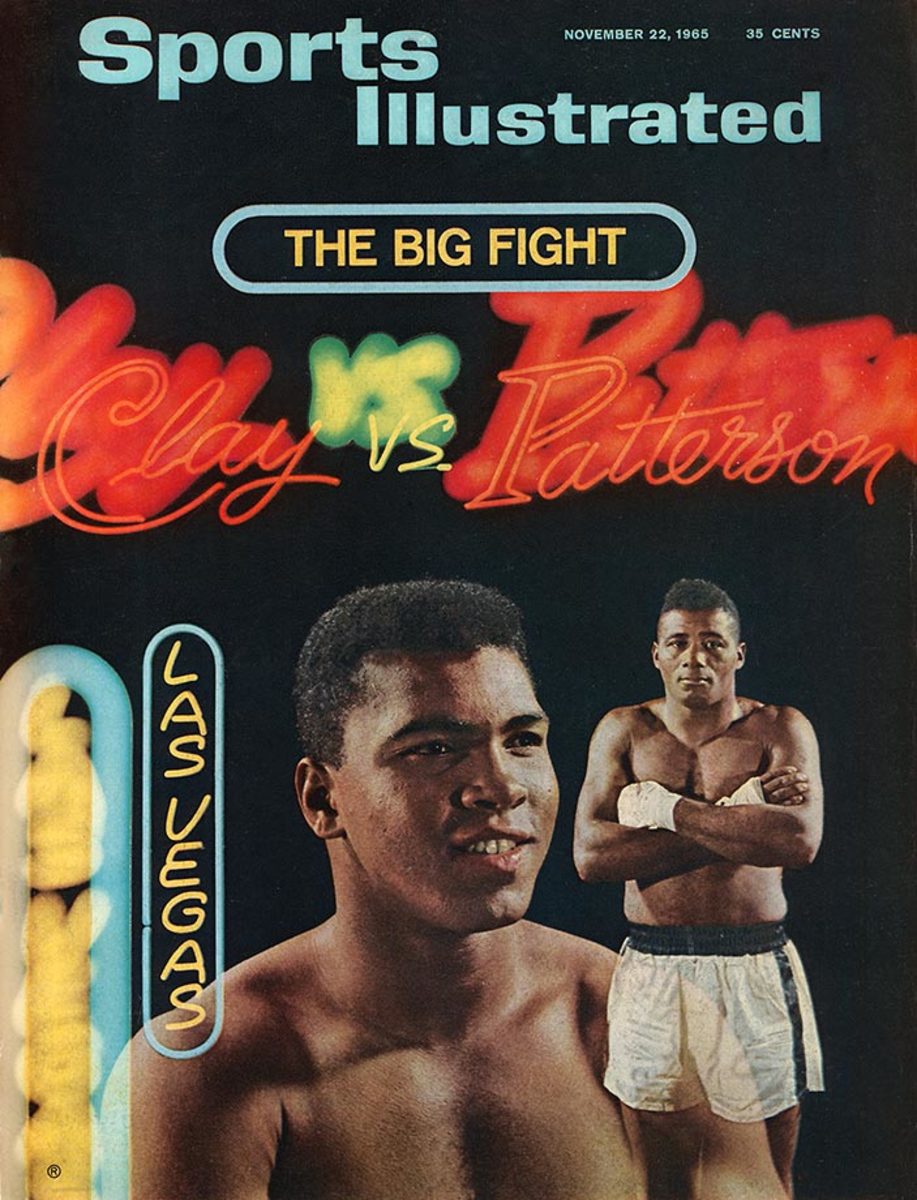
April 11, 1966
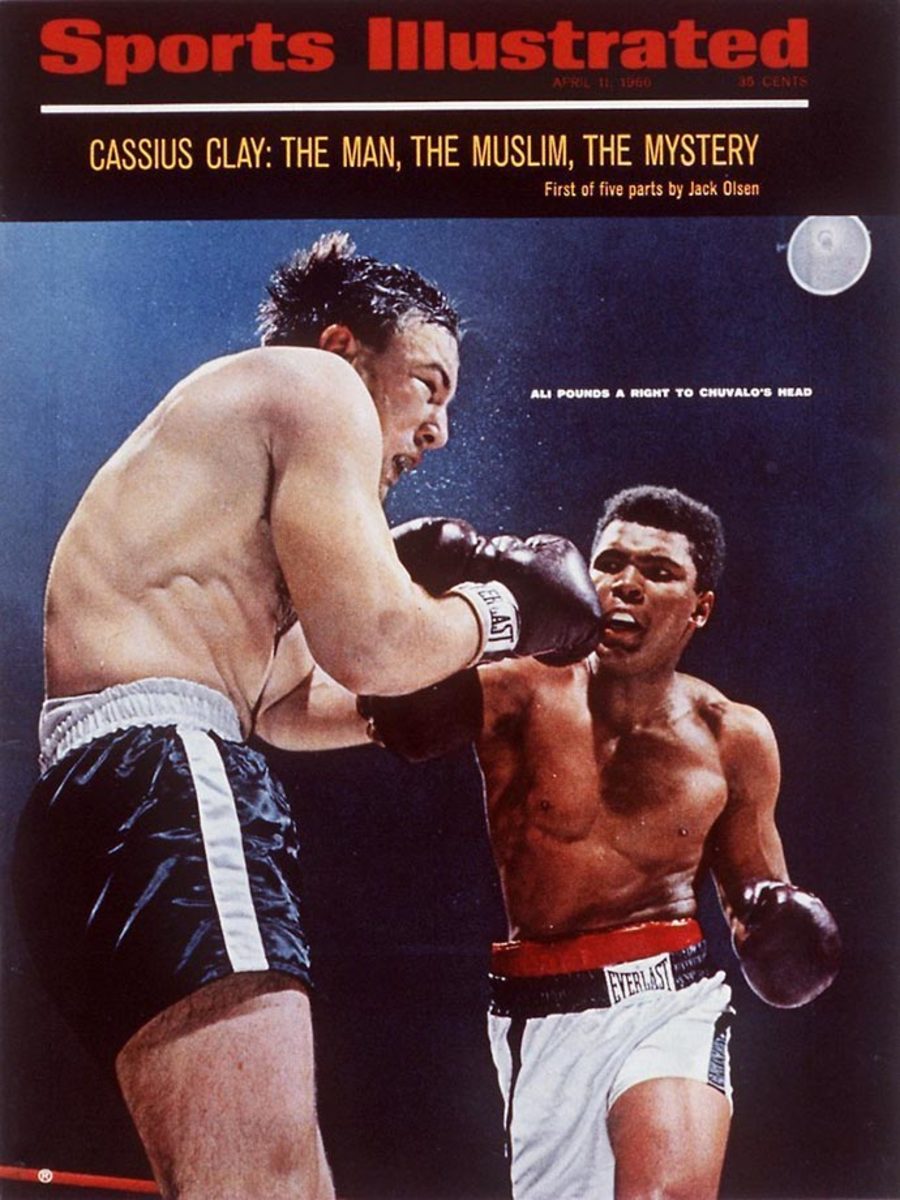
February 6, 1967
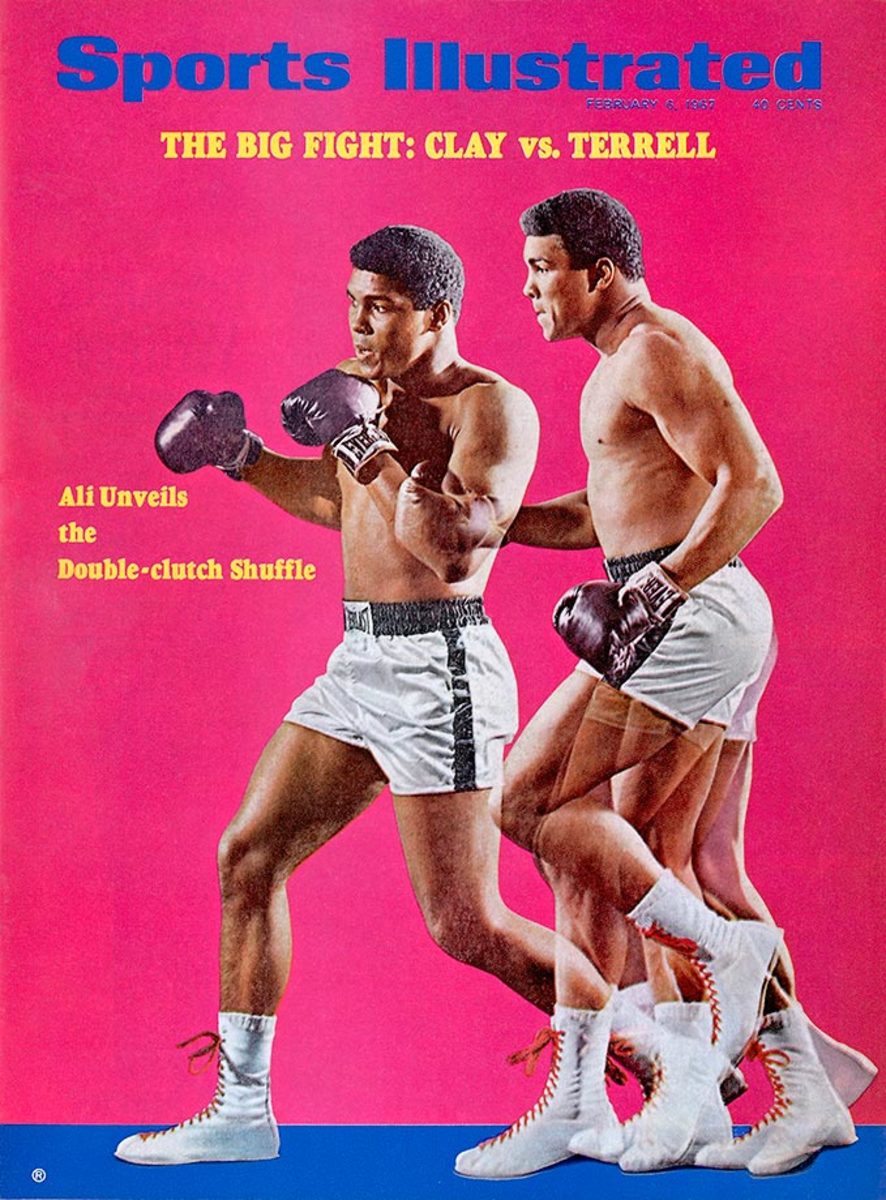
July 10, 1967
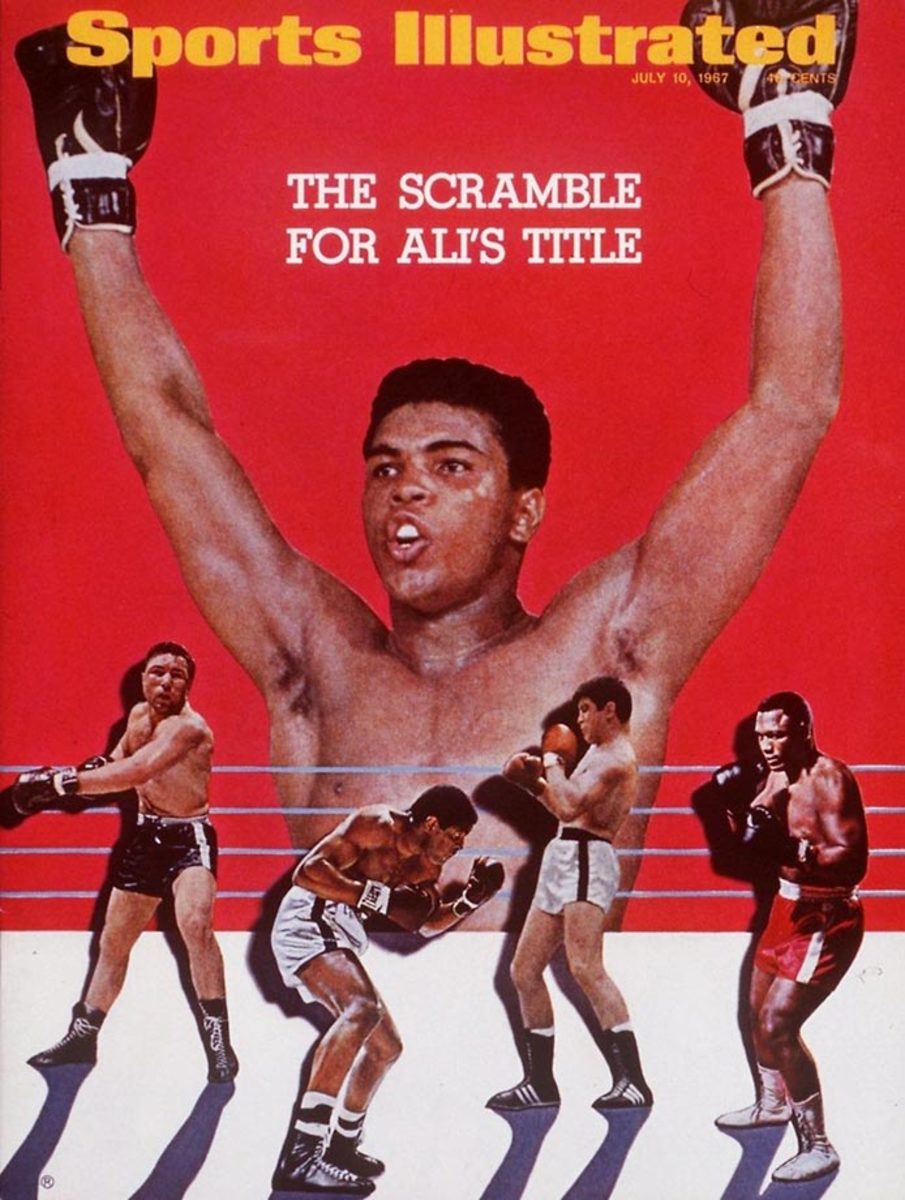
May 5, 1969
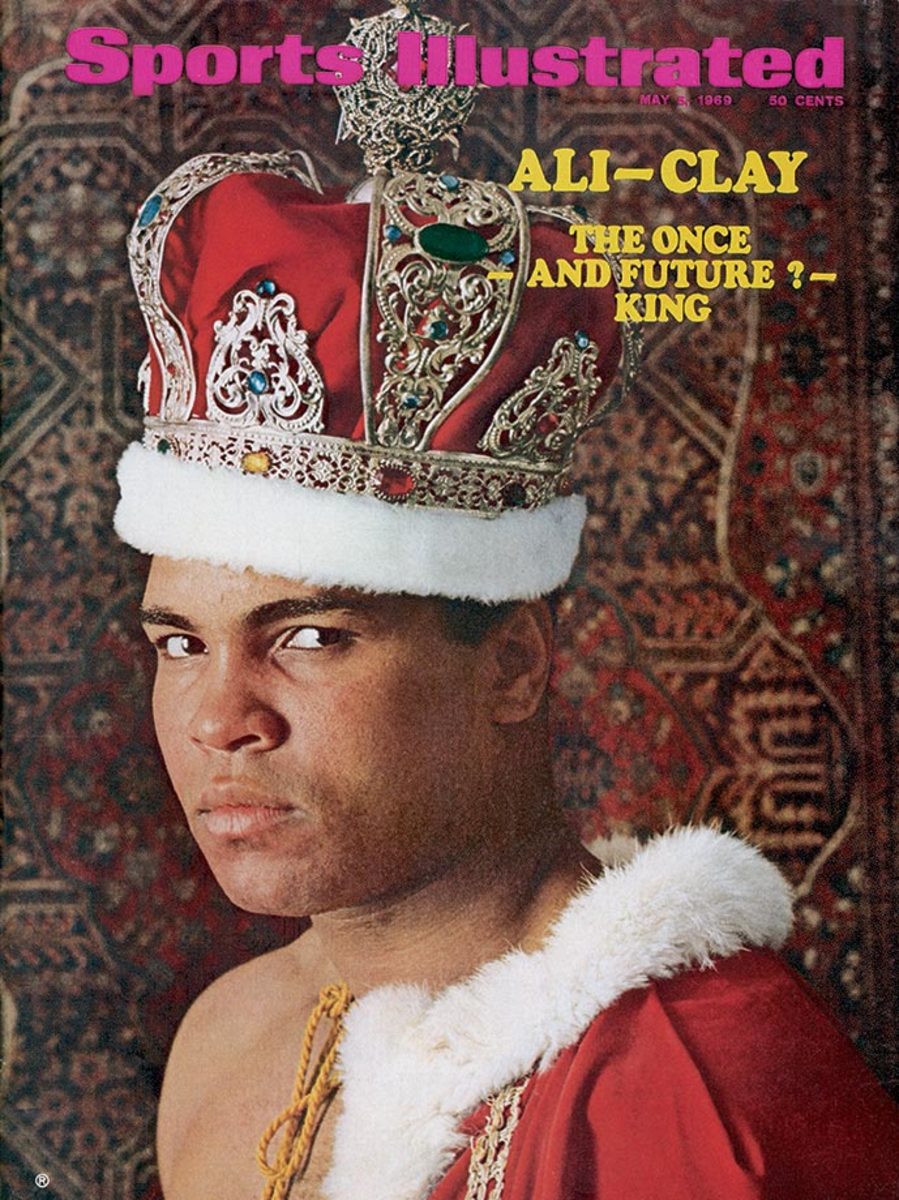
March 1, 1971
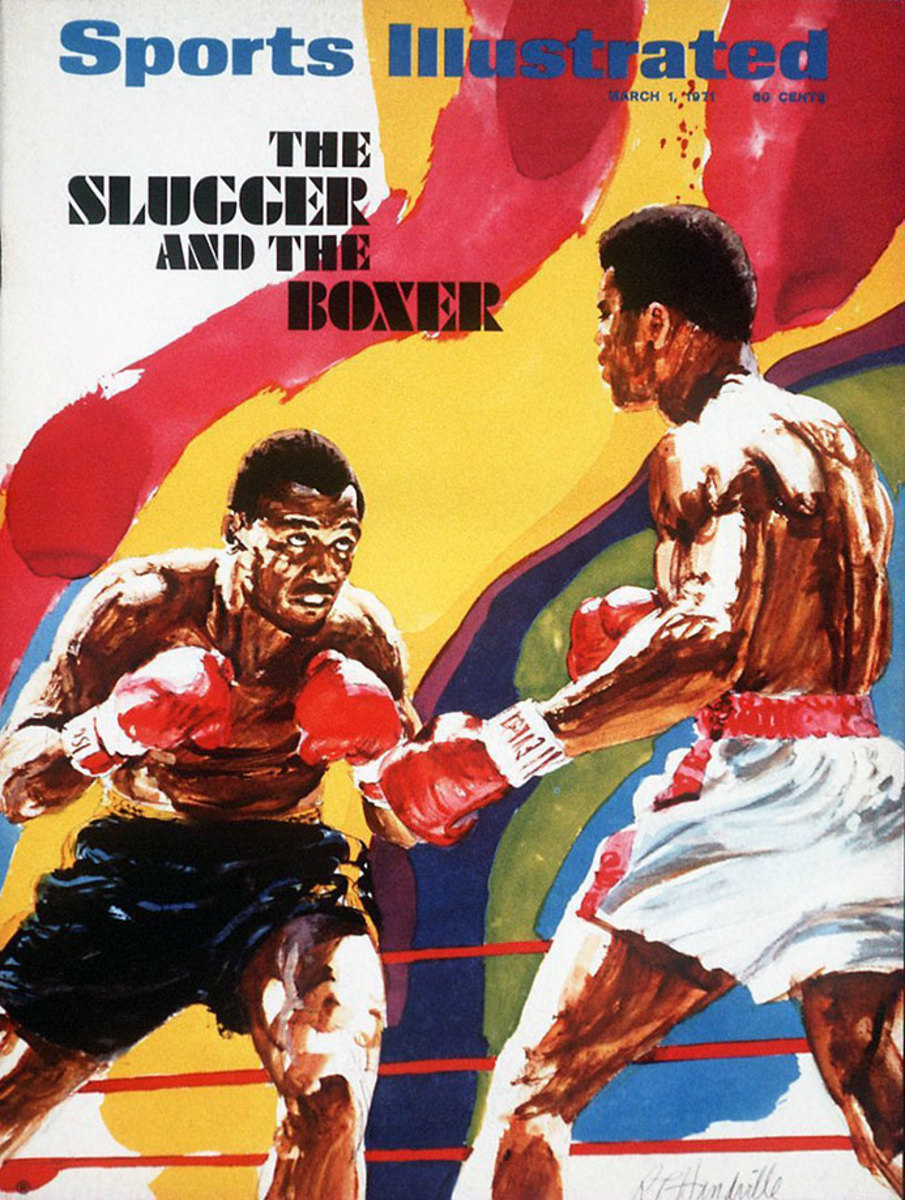
March 15, 1971
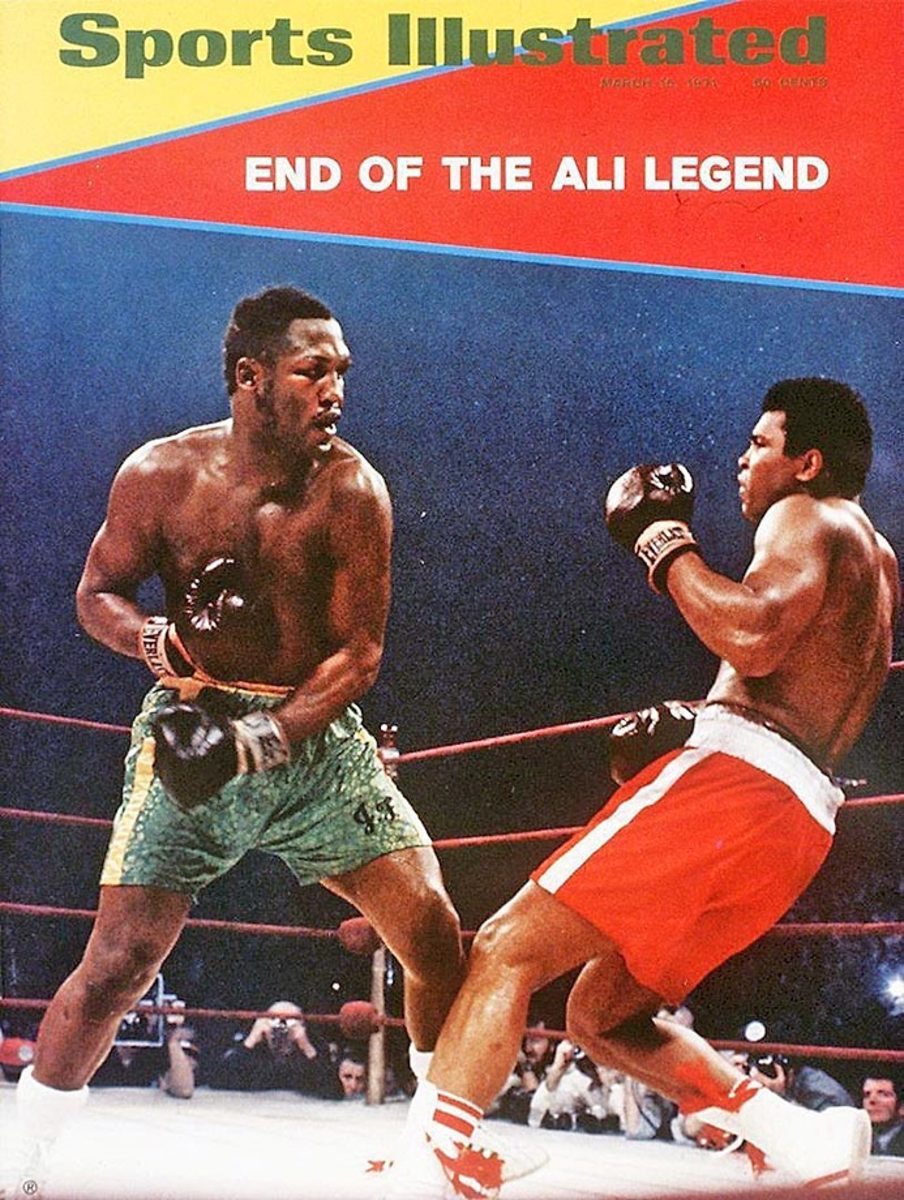
July 26, 1971
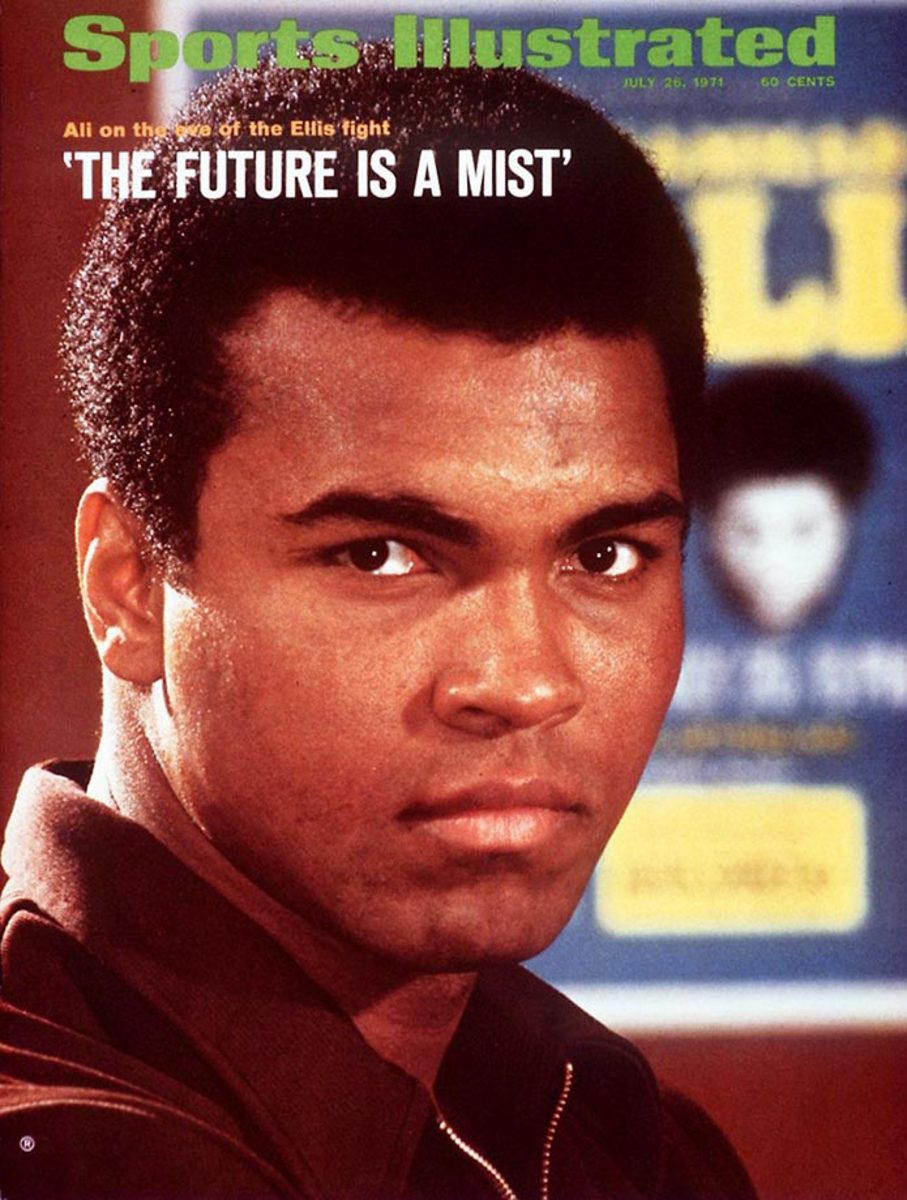
April 23, 1973
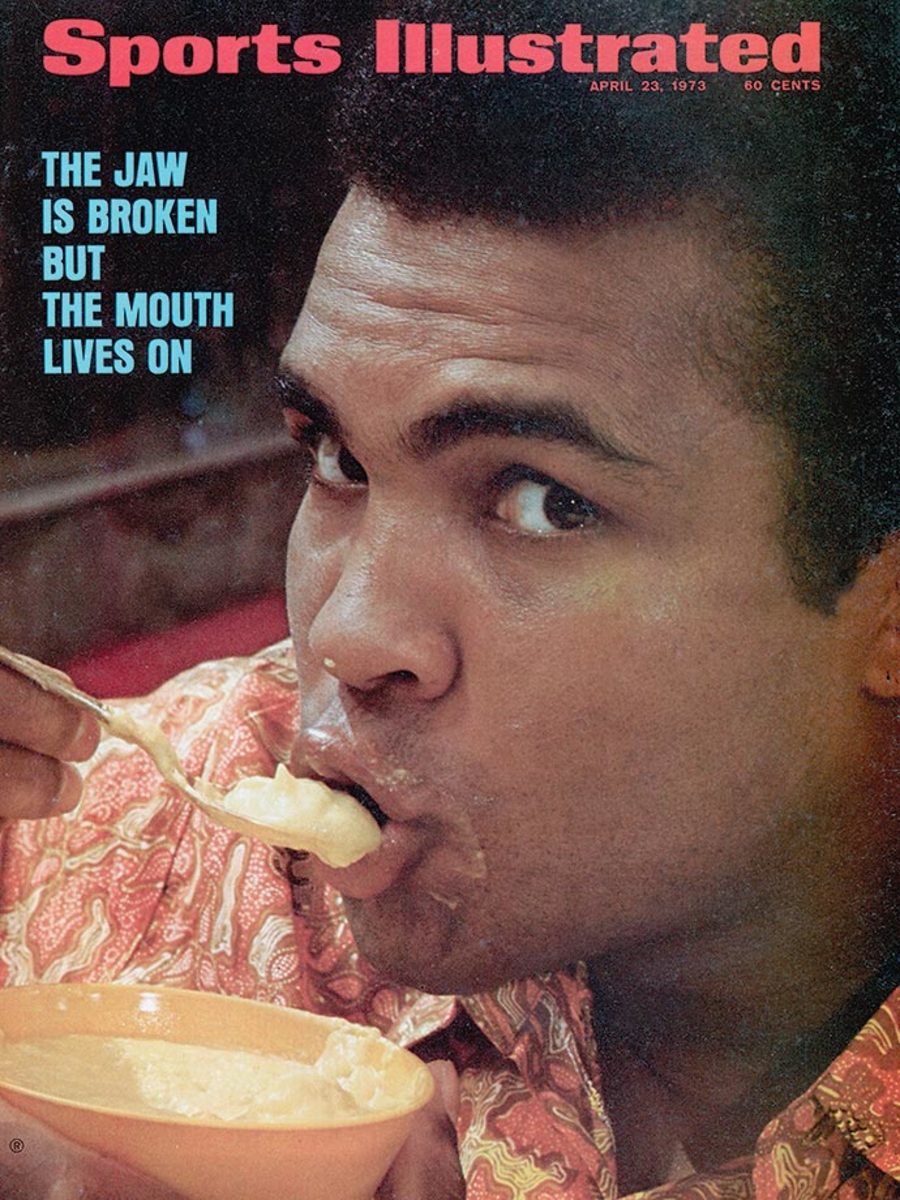
February 4, 1974
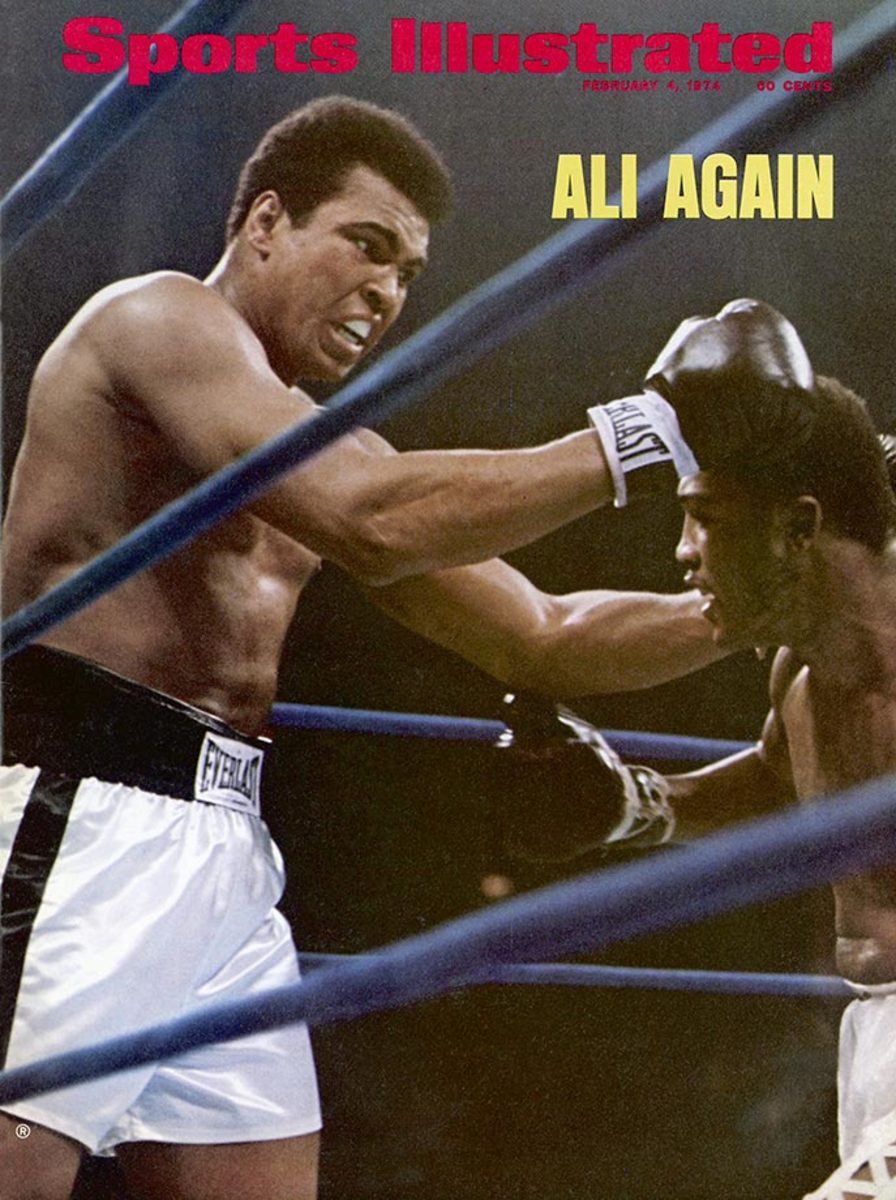
October 28, 1974
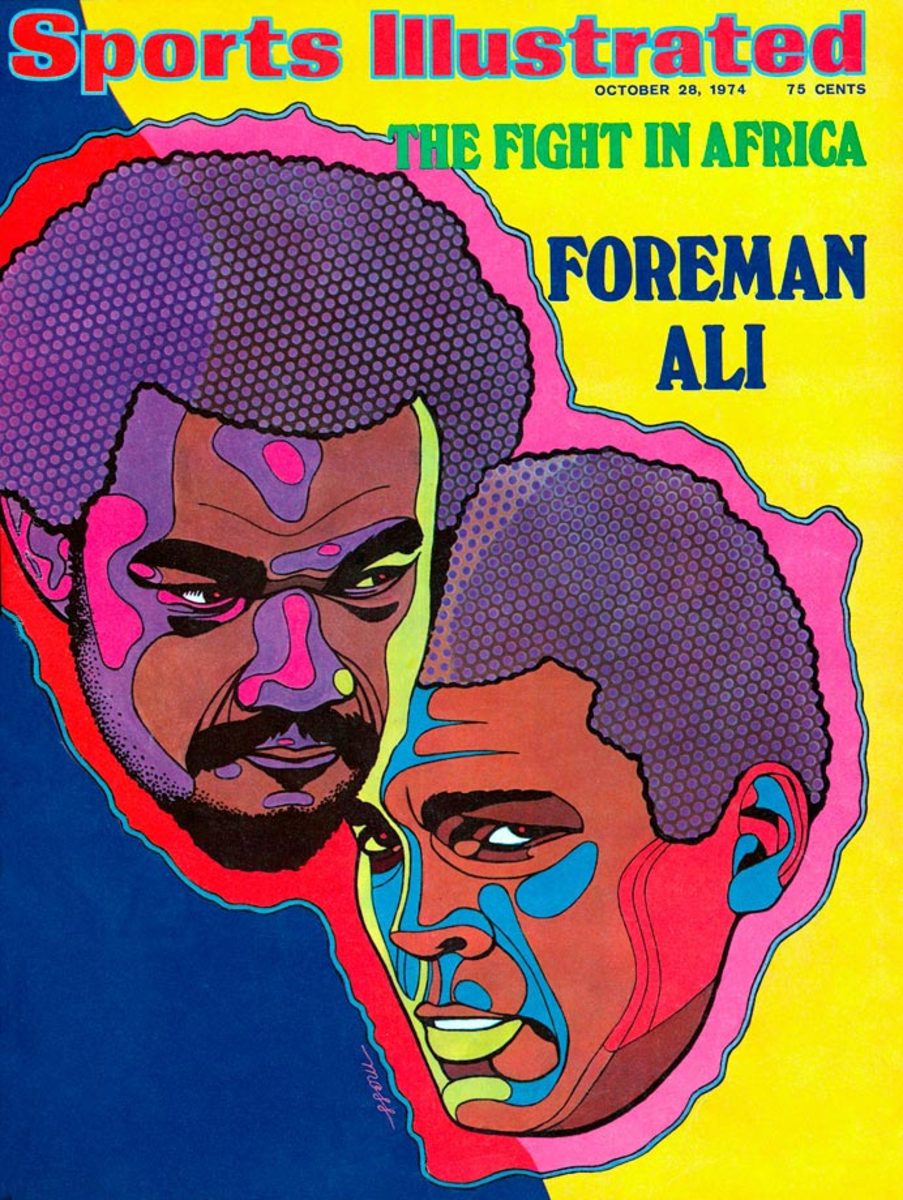
November 11, 1974
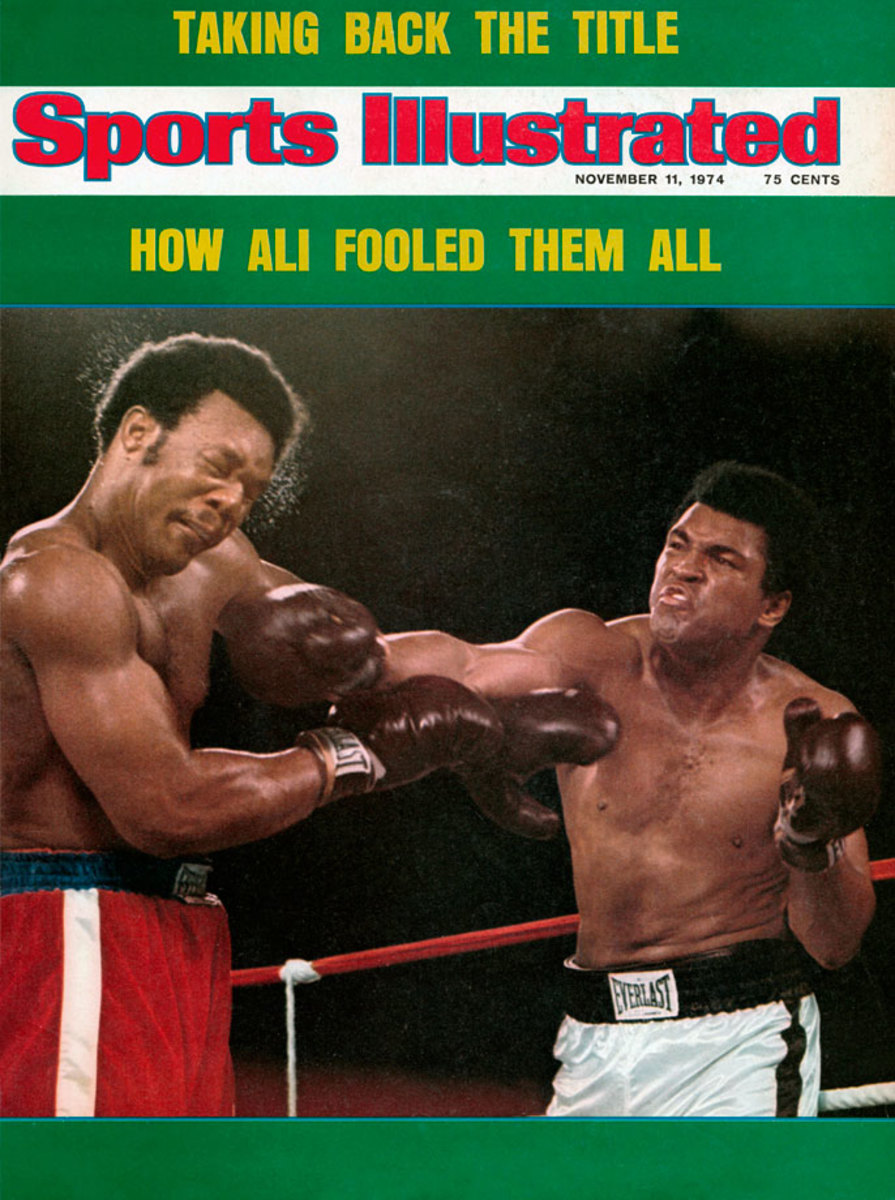
December 23, 1974
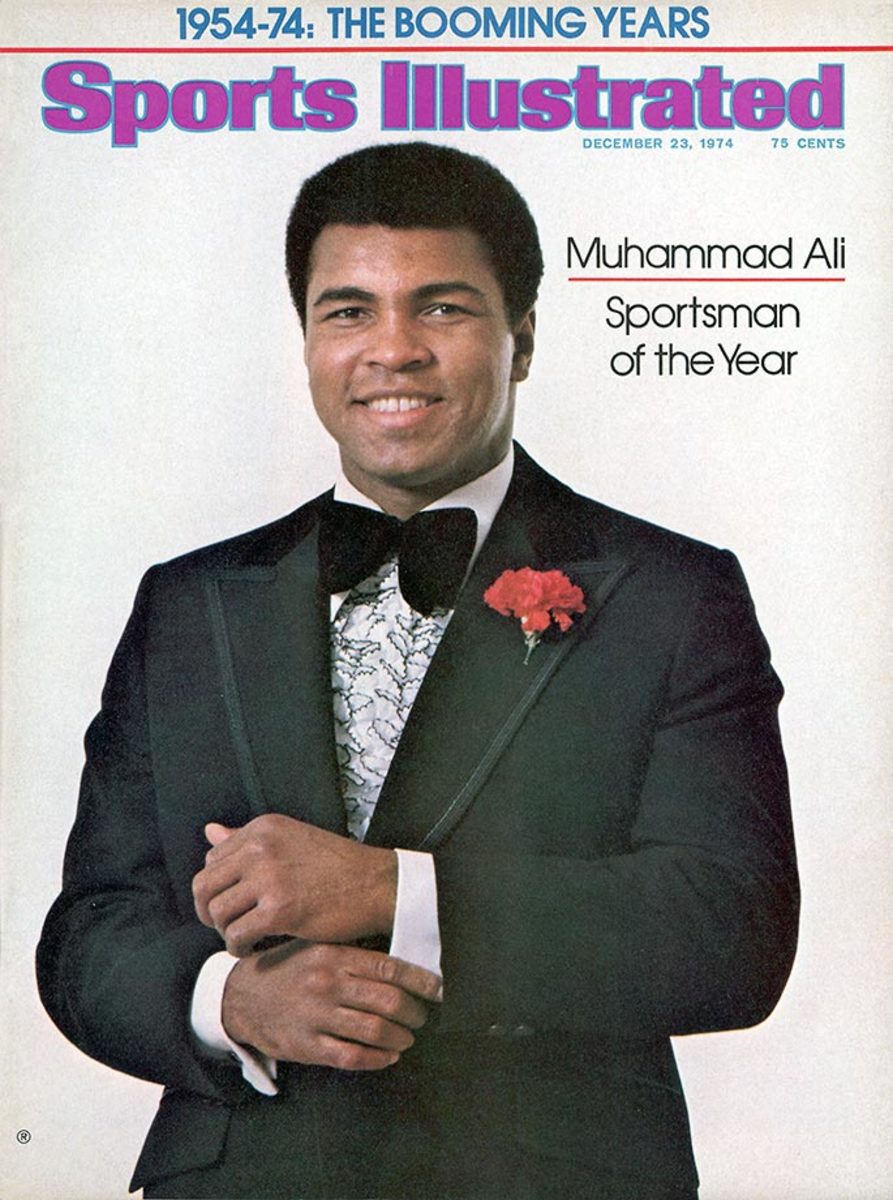
September 15, 1975
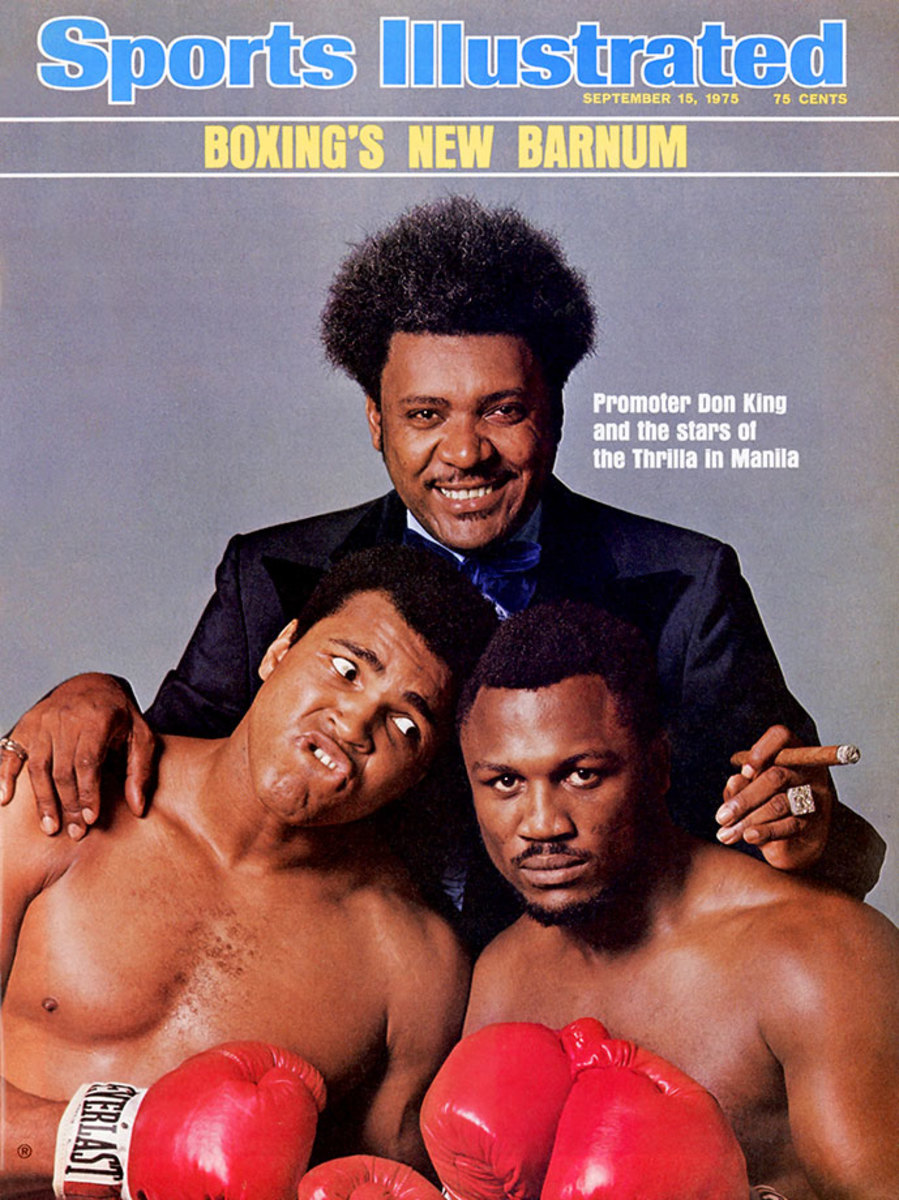
October 13, 1975
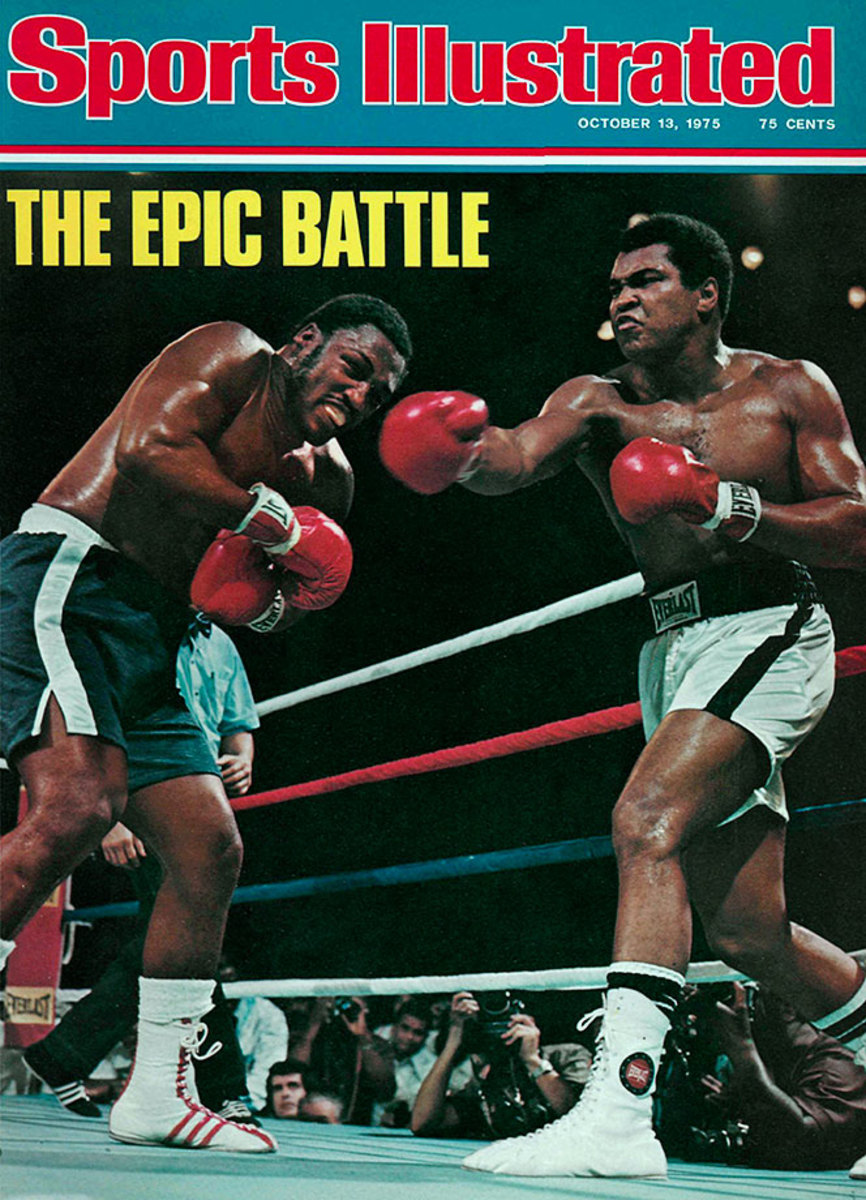
March 1, 1976
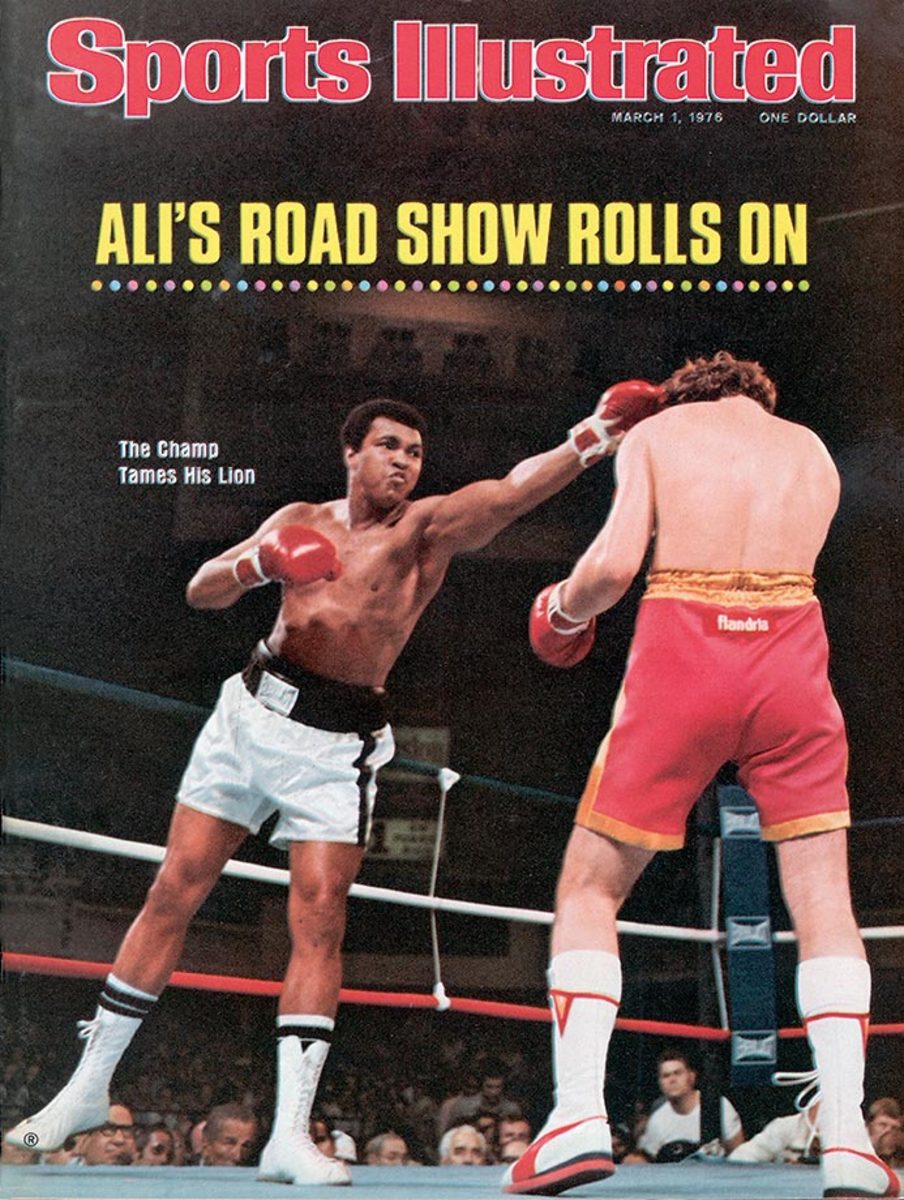
October 10, 1977
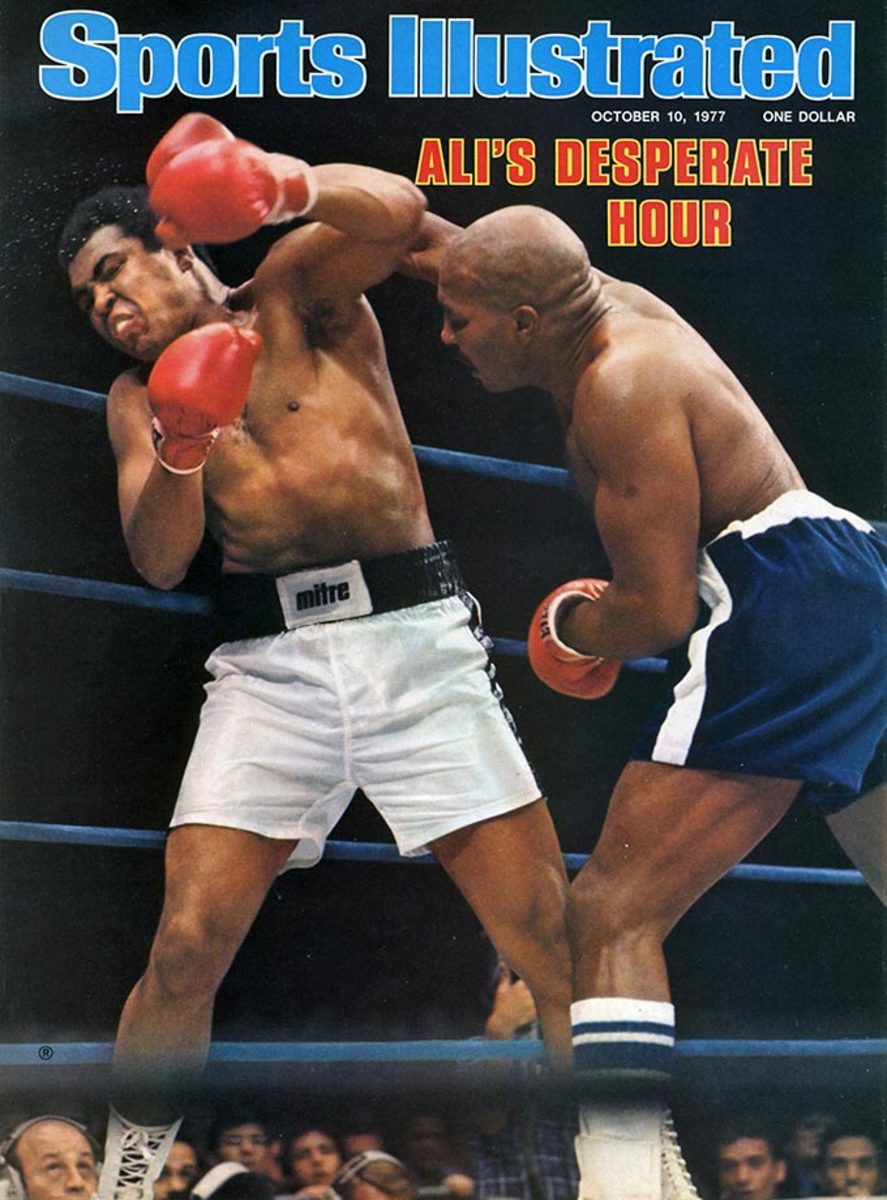
September 25, 1978
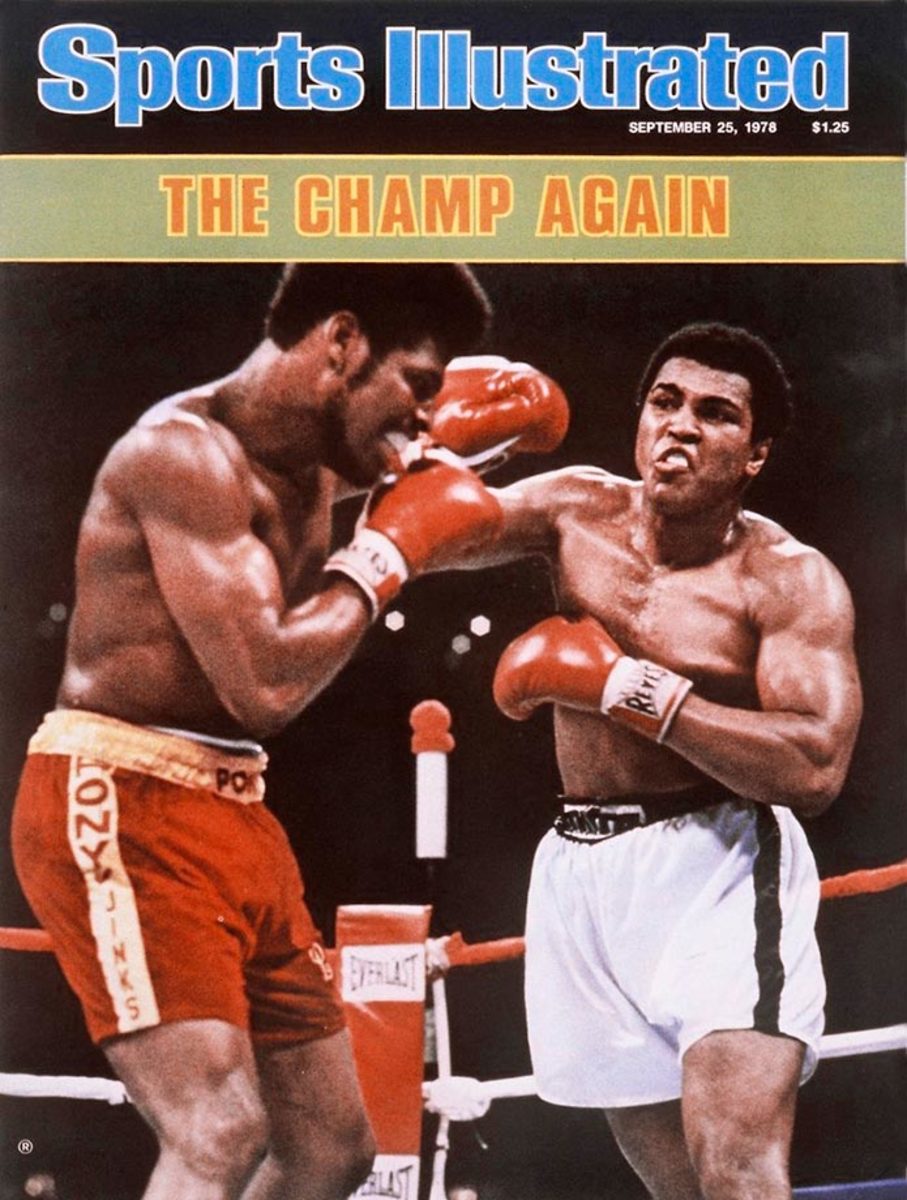
April 14, 1980
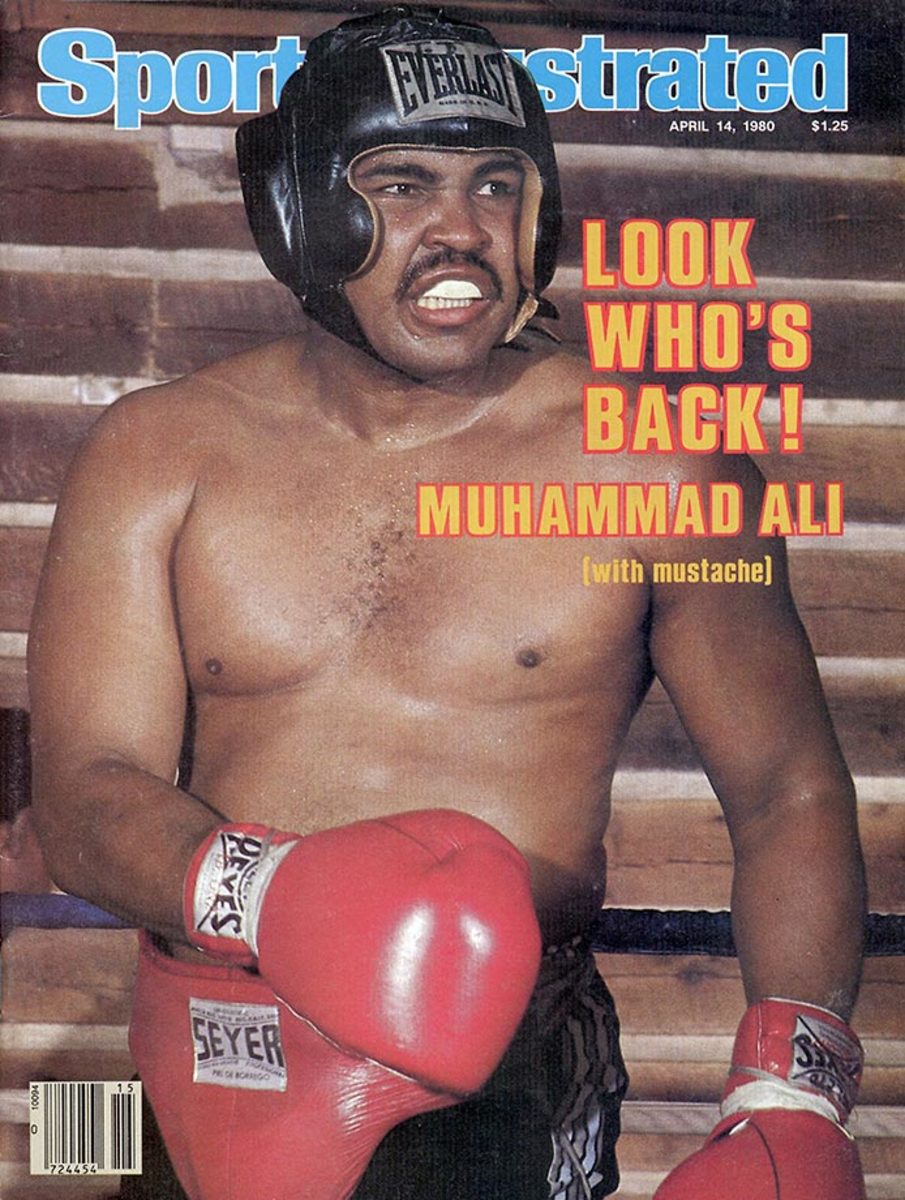
September 29, 1980
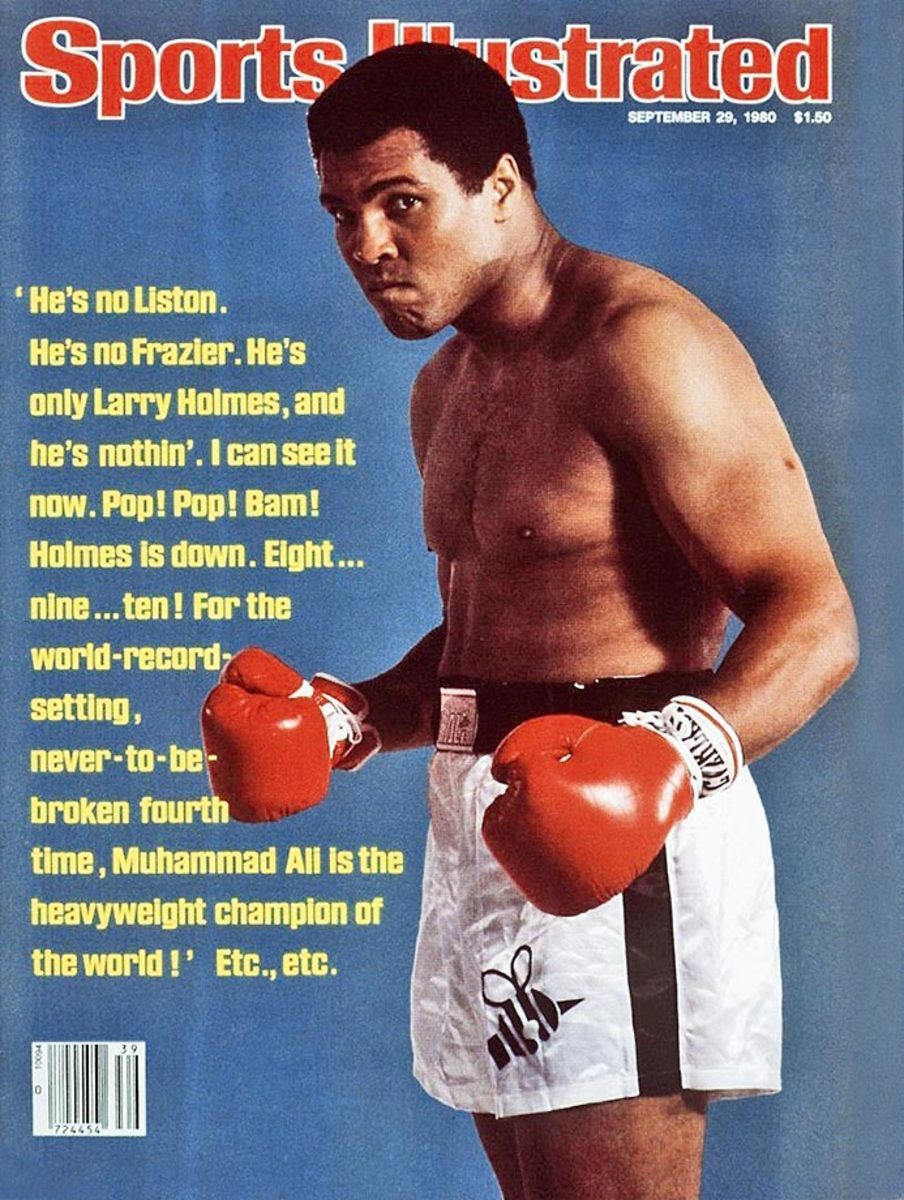
October 13, 1980
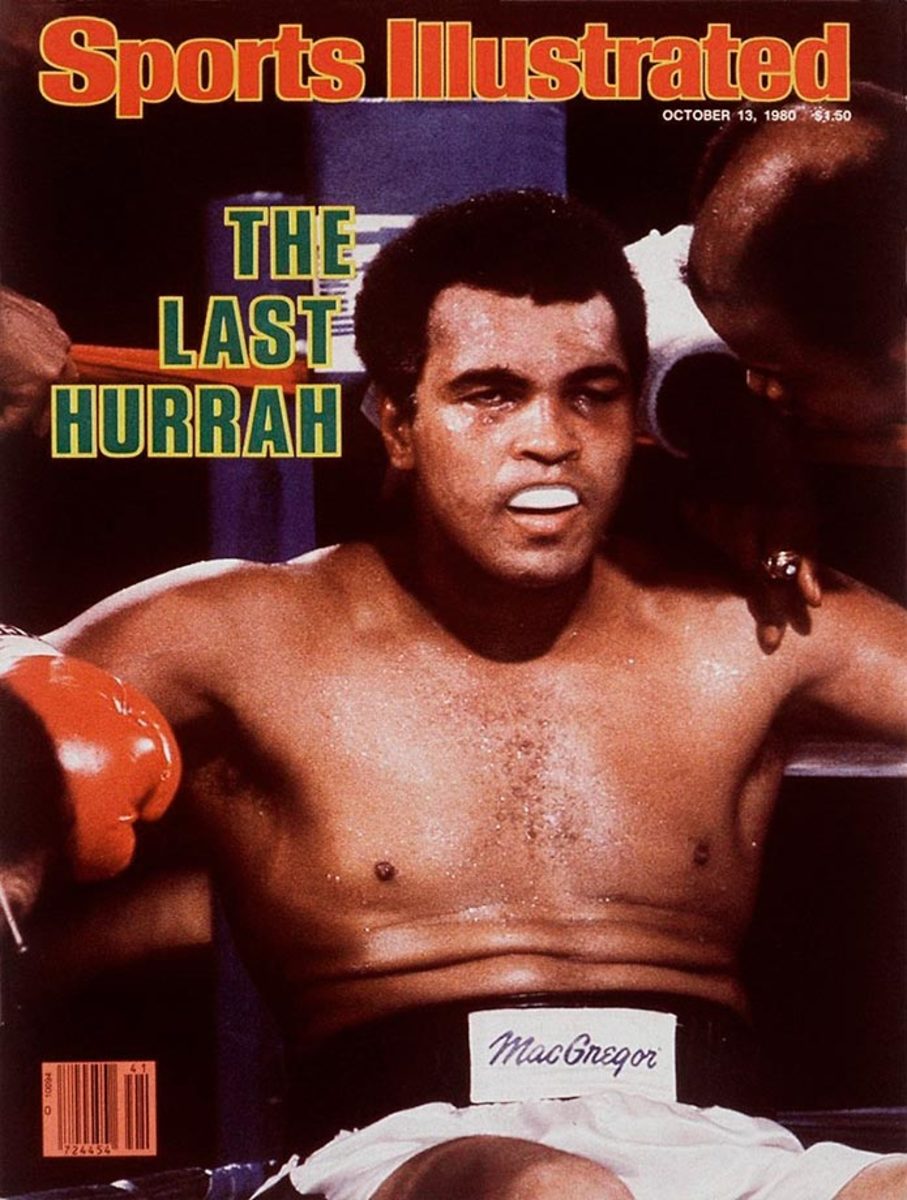
April 25, 1988
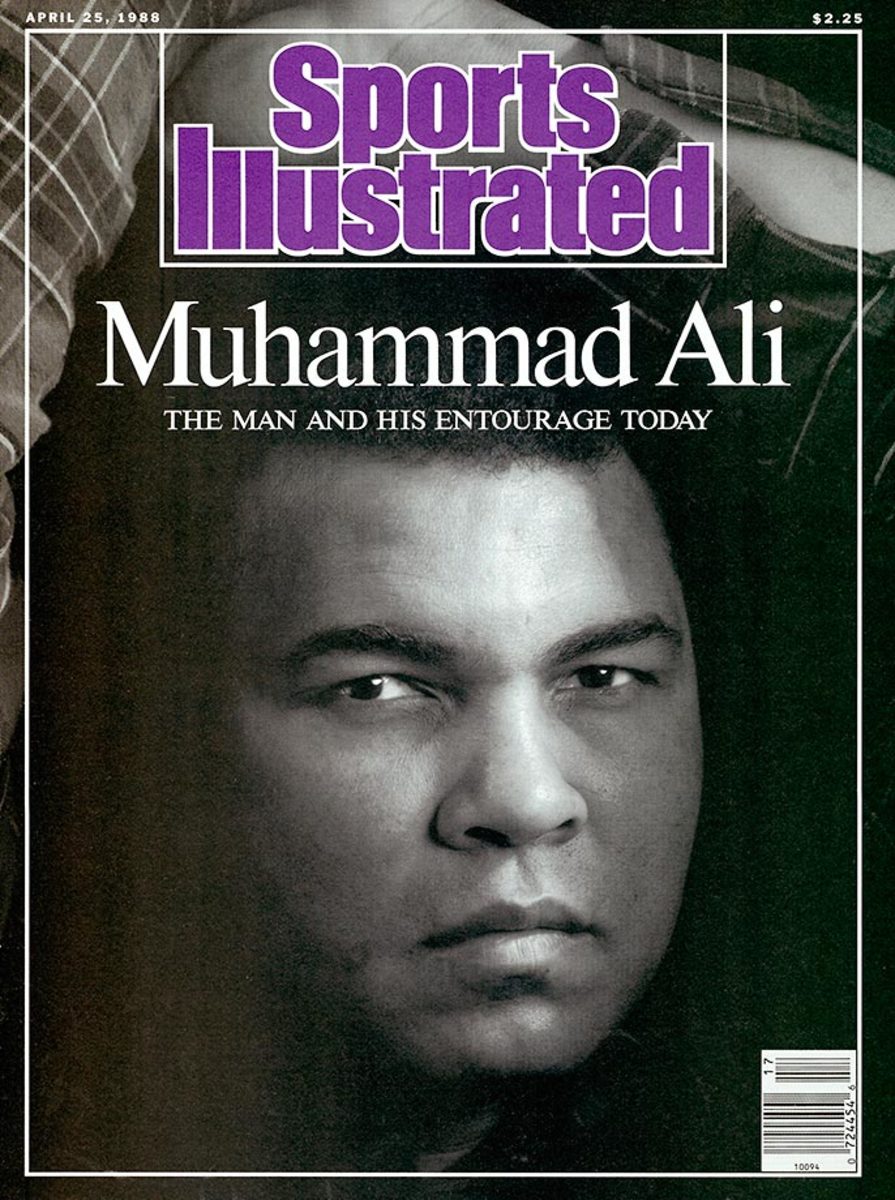
November 15, 1989
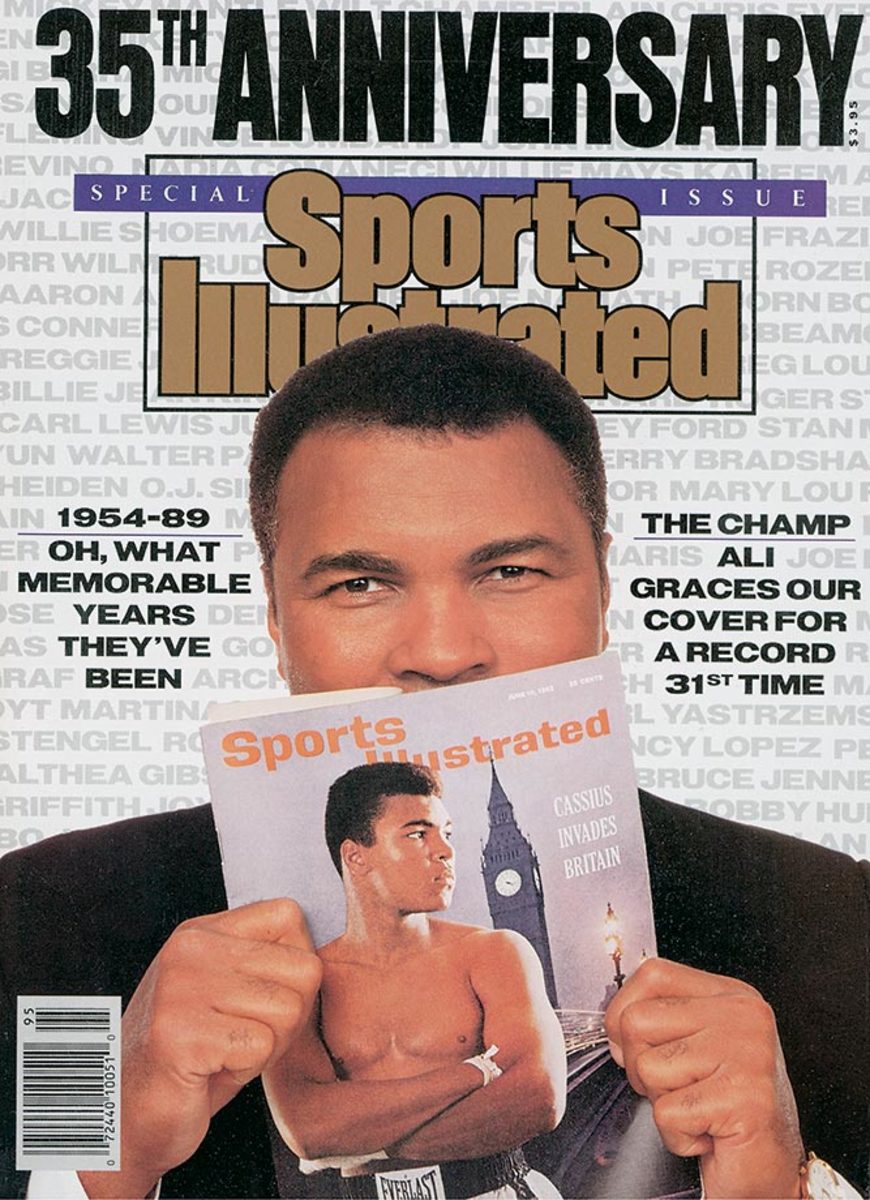
January 13, 1992
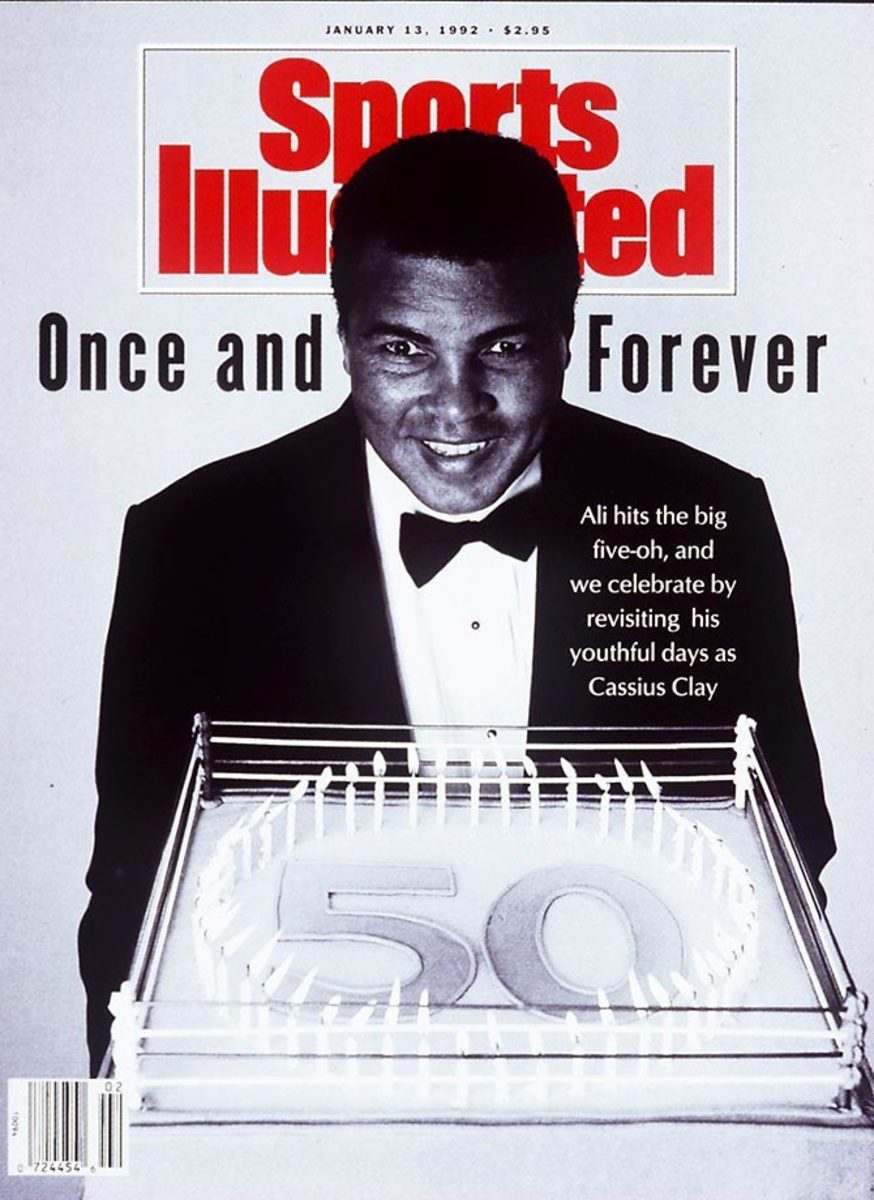
September 19, 1994
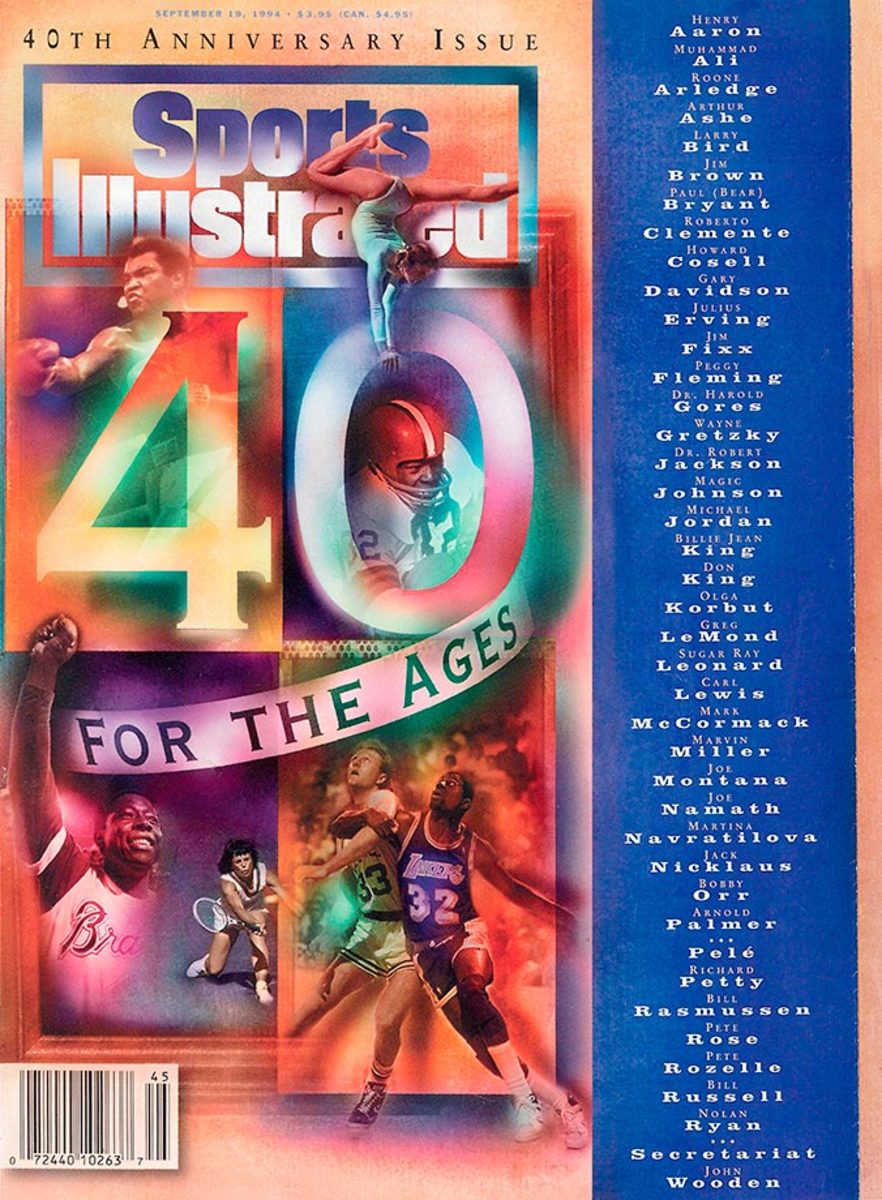
September 30, 1996
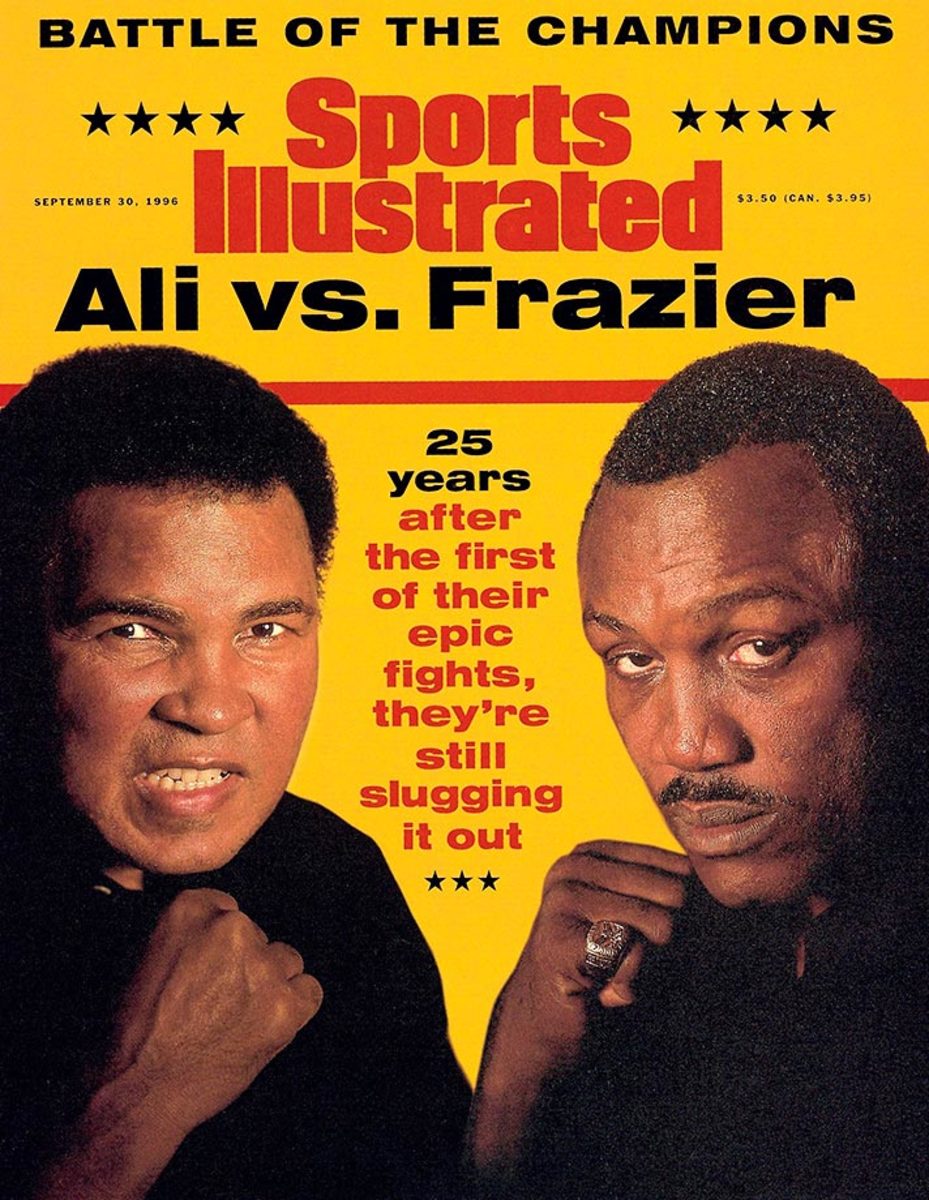
July 13, 1998
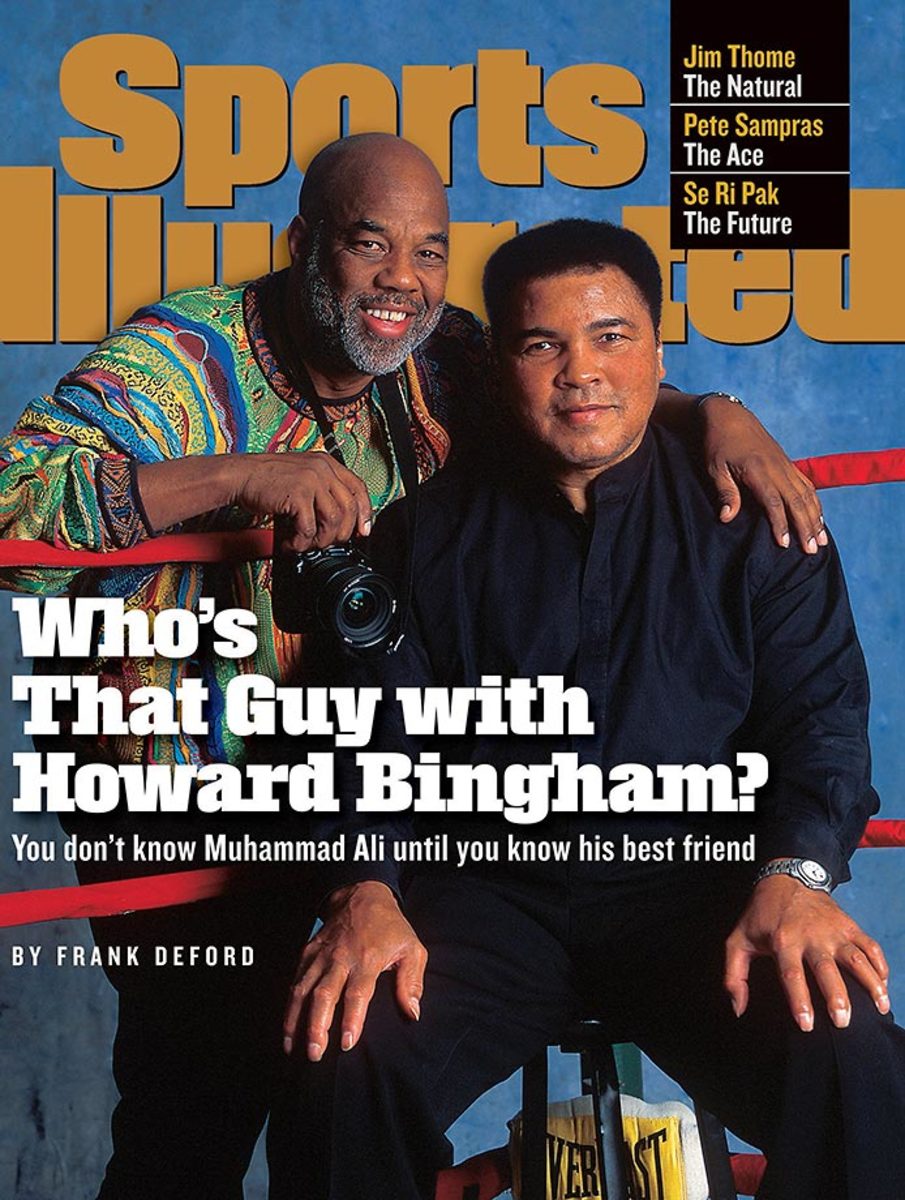
December 28, 1998
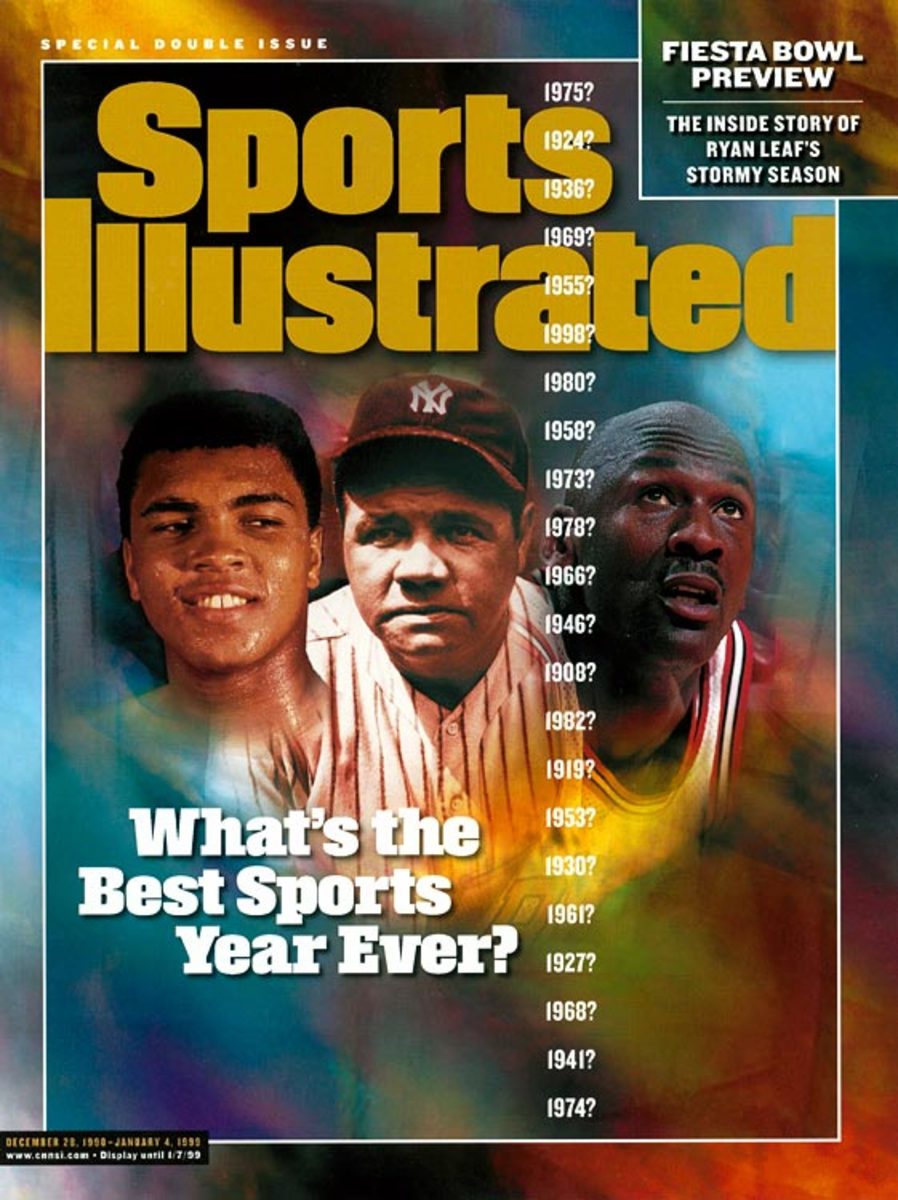
July 26, 1999
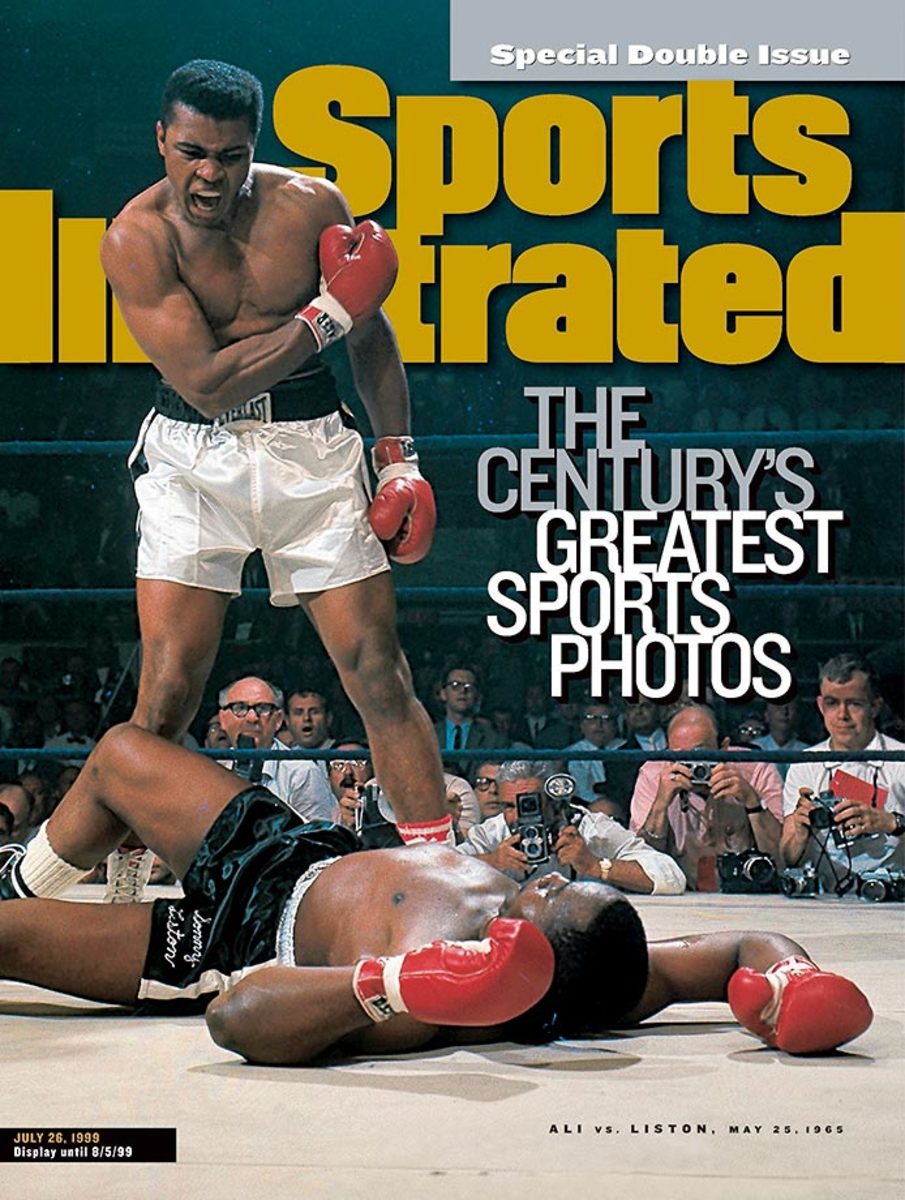
November 29, 1999
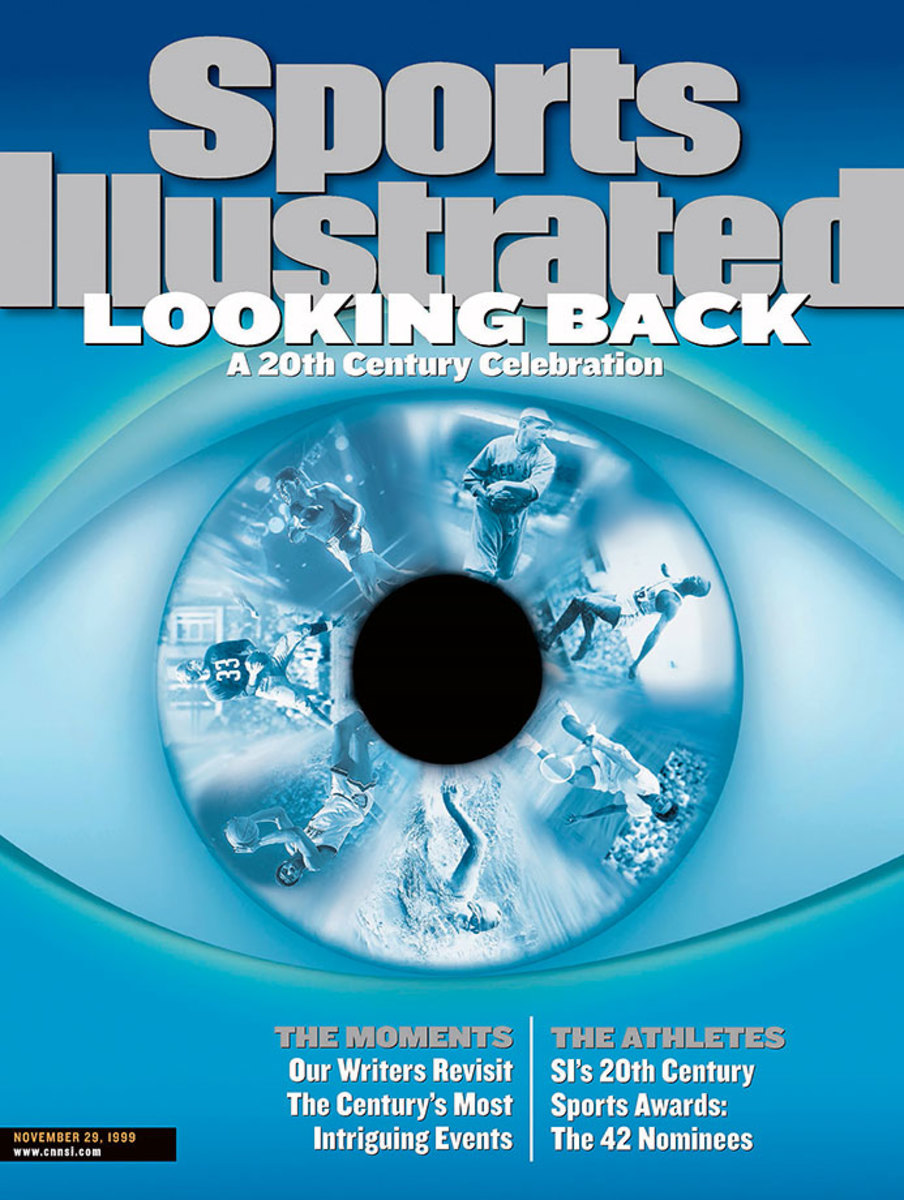
April 26, 2004
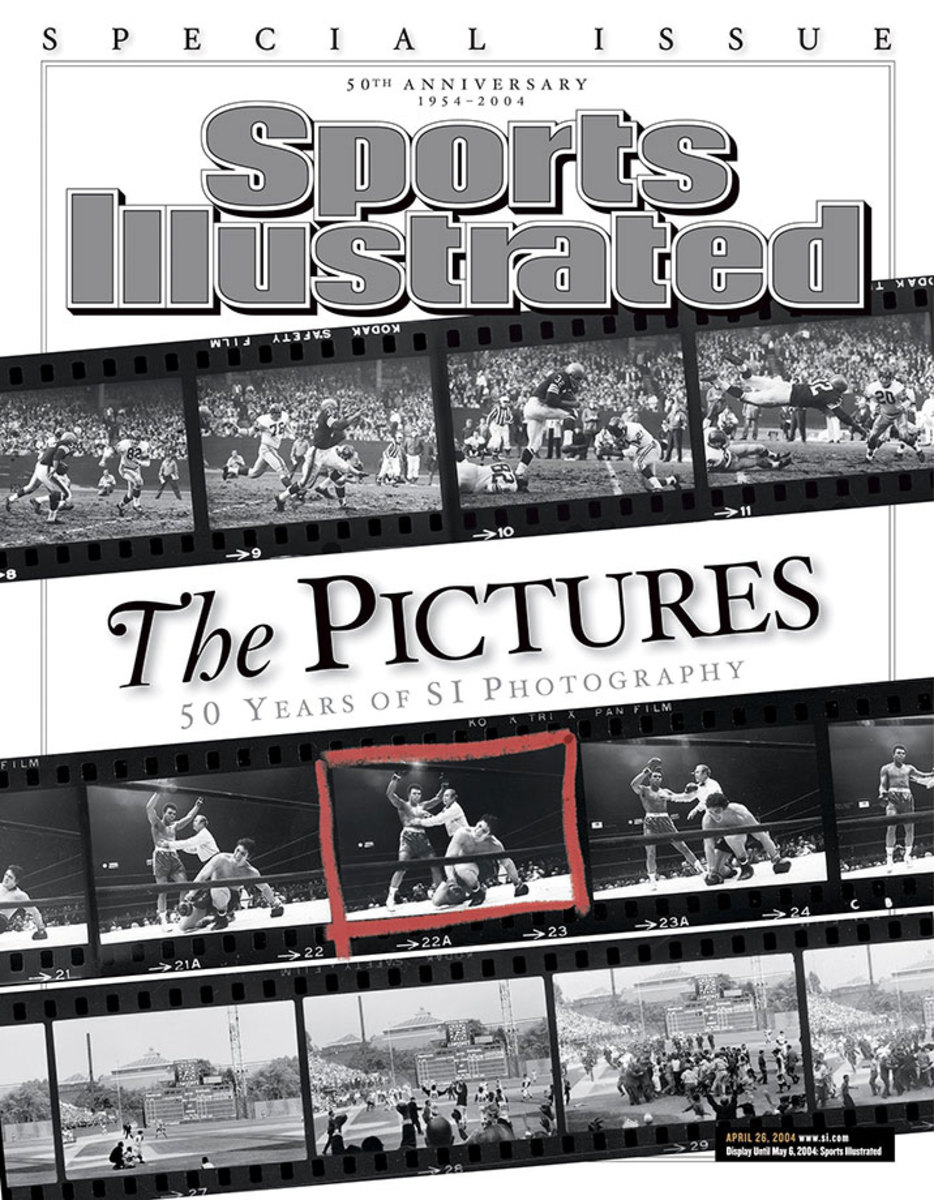
October 5, 2015
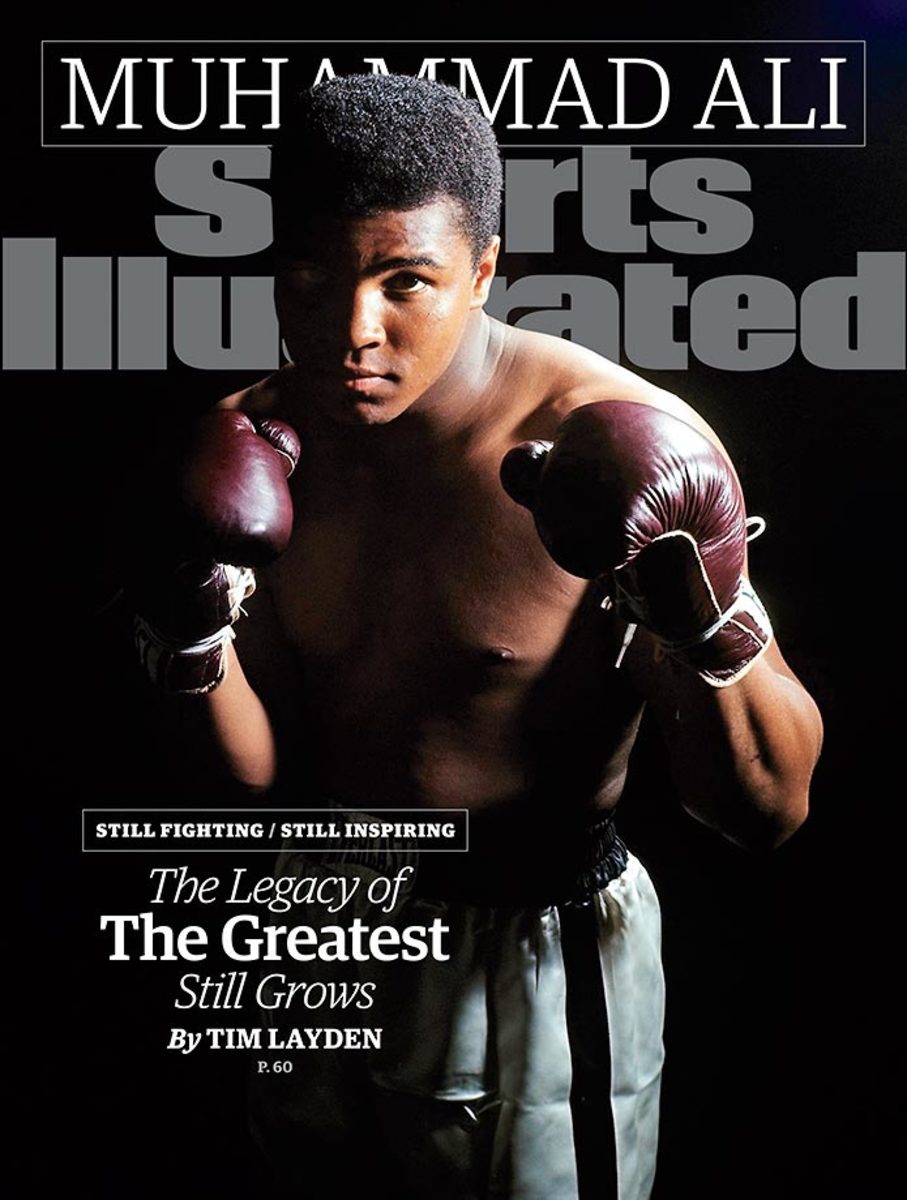
June 13, 2016
